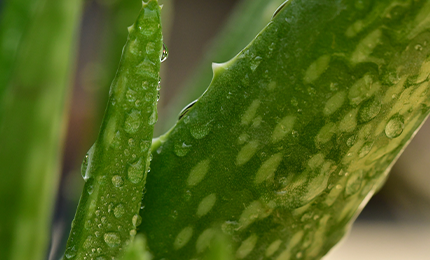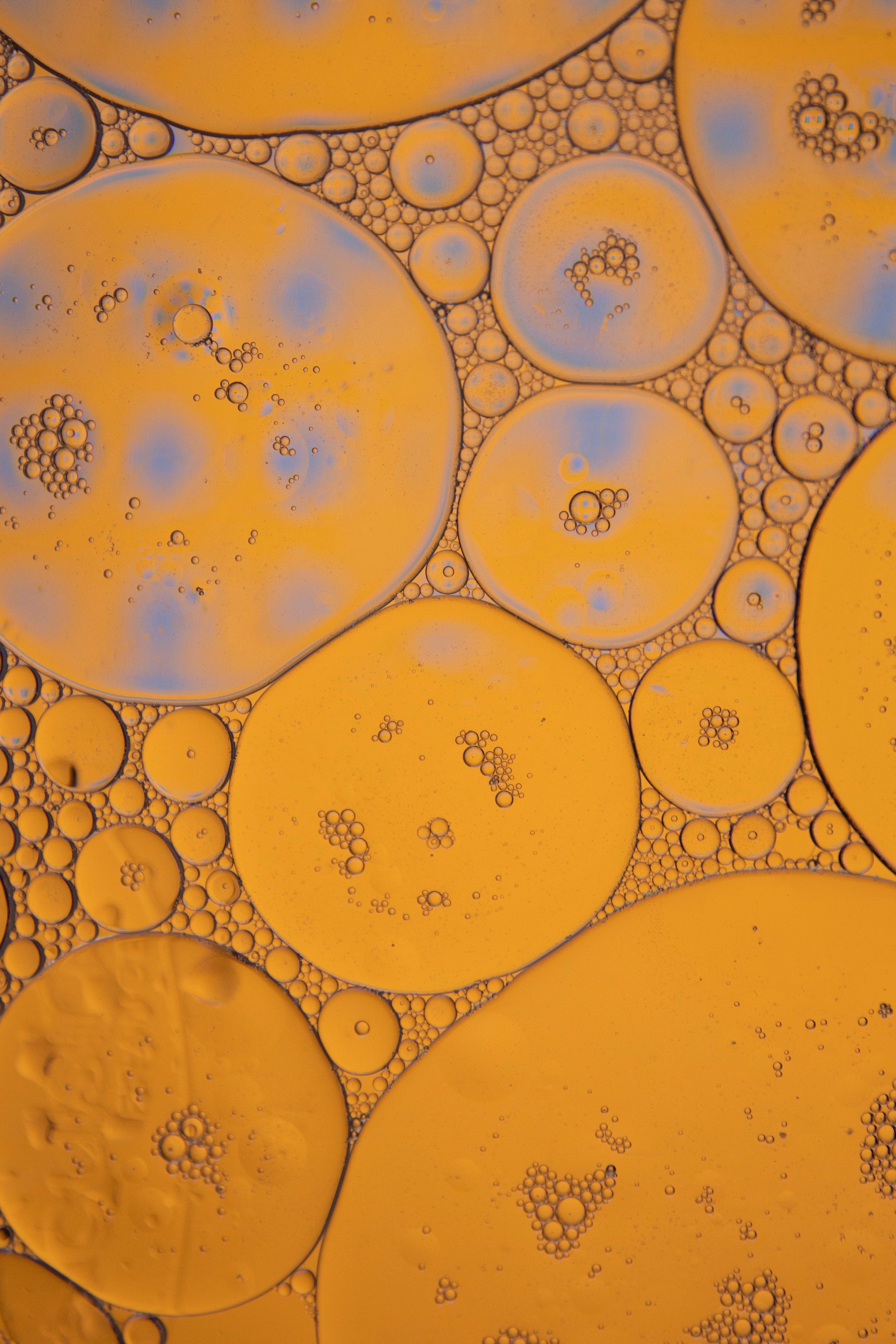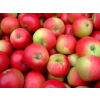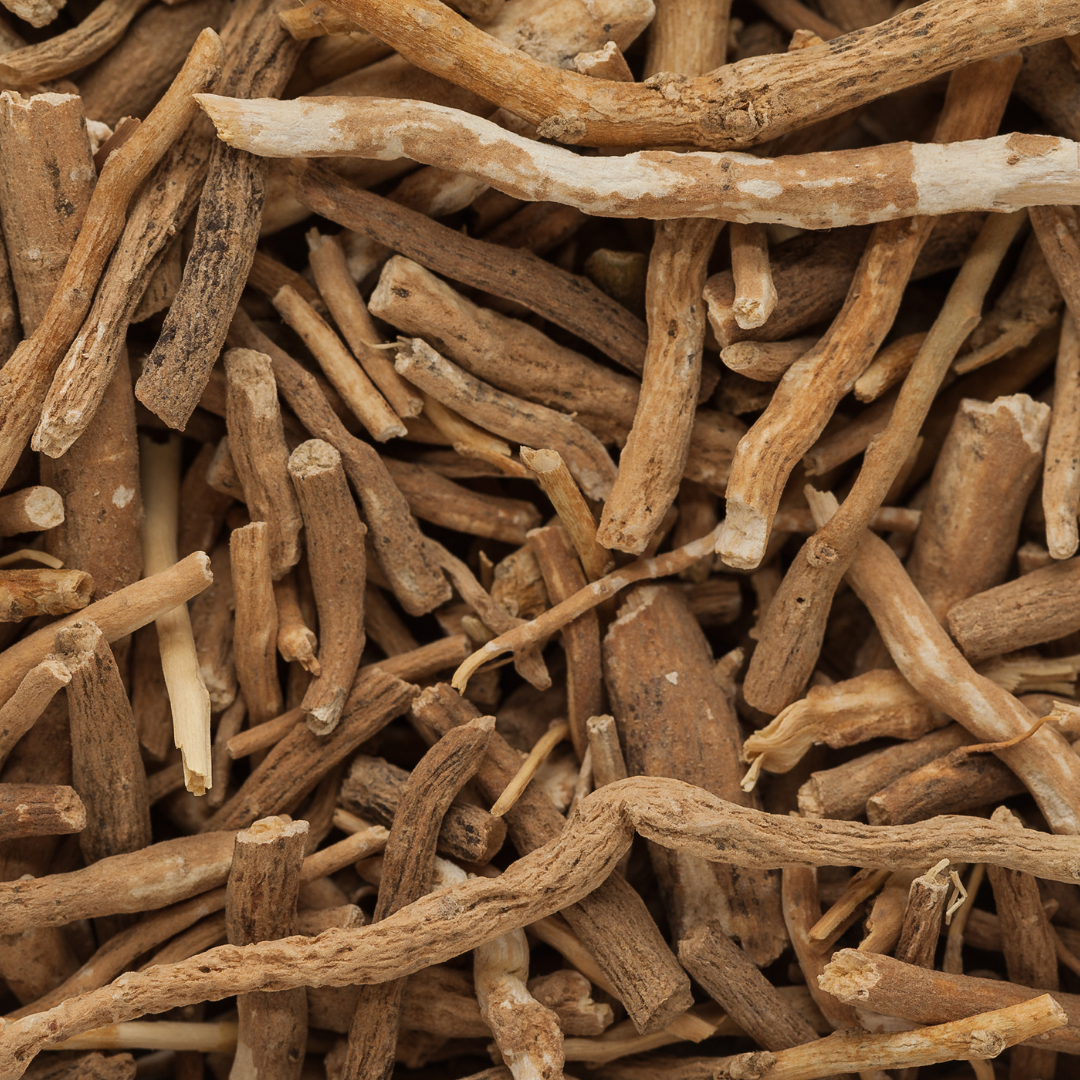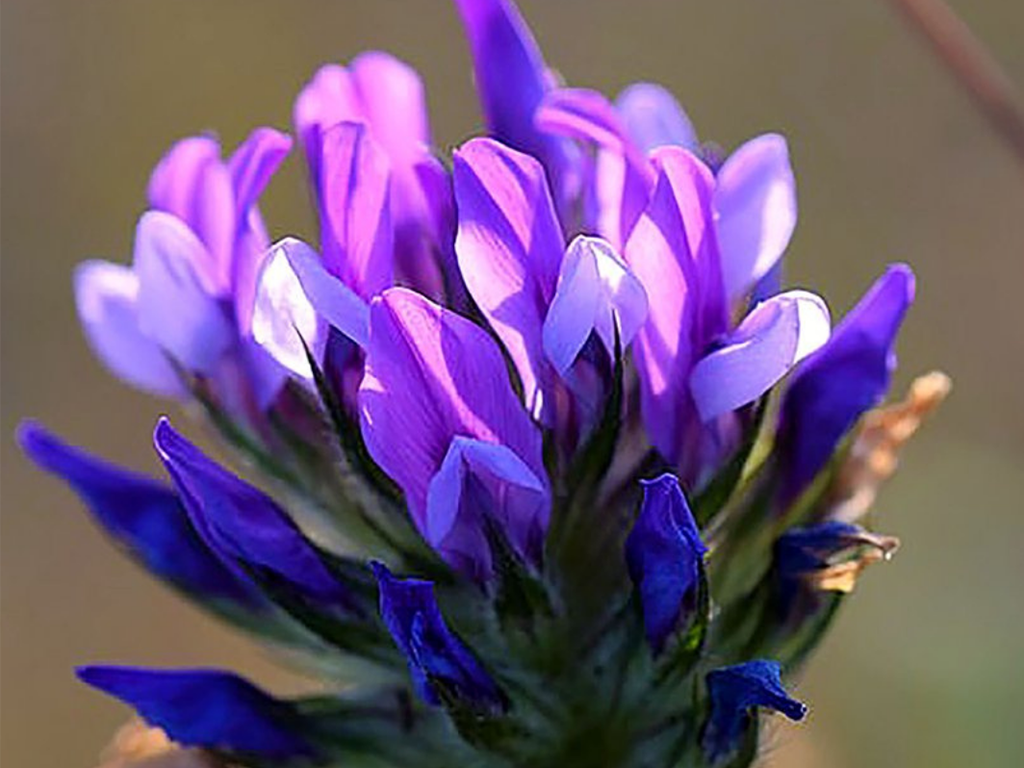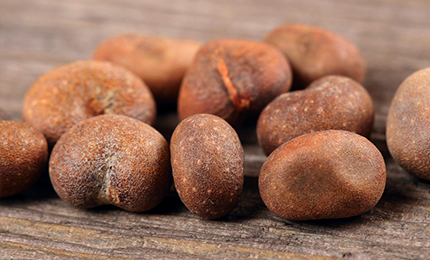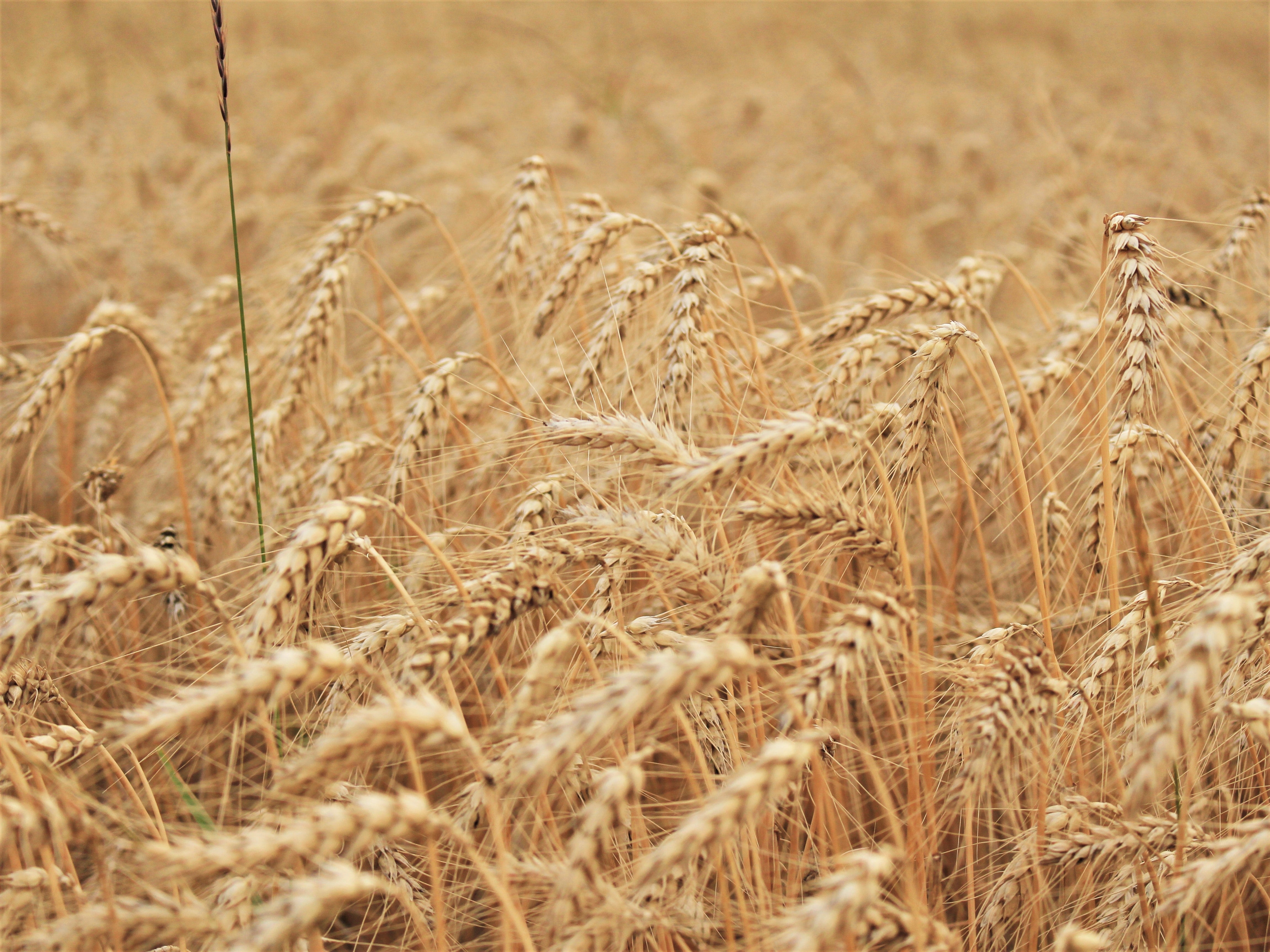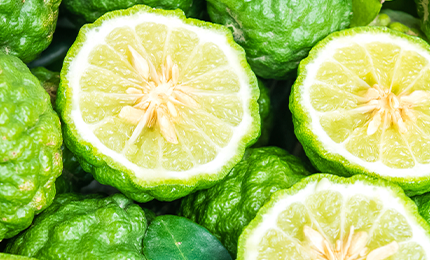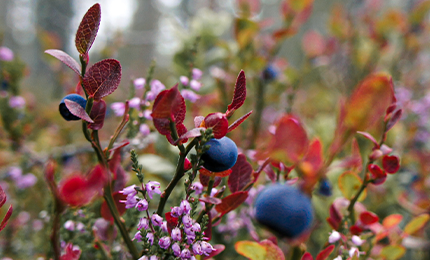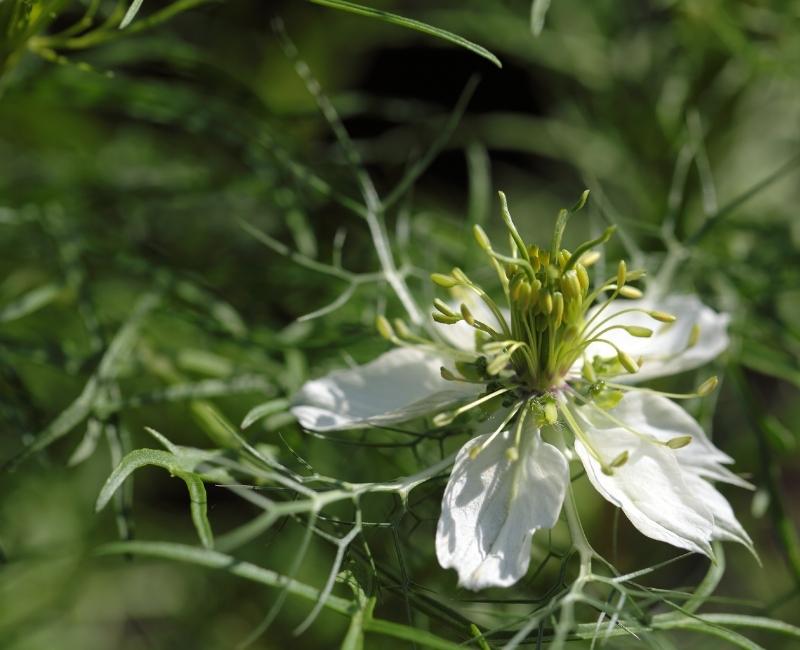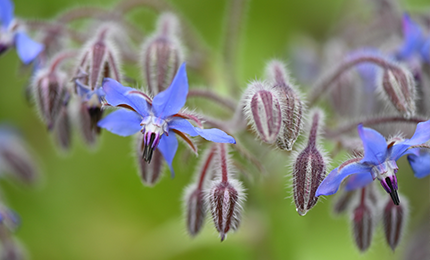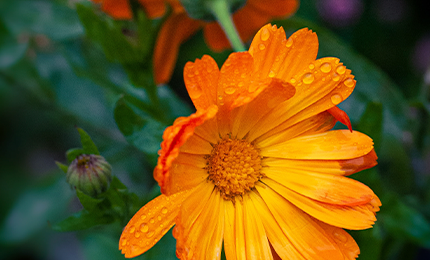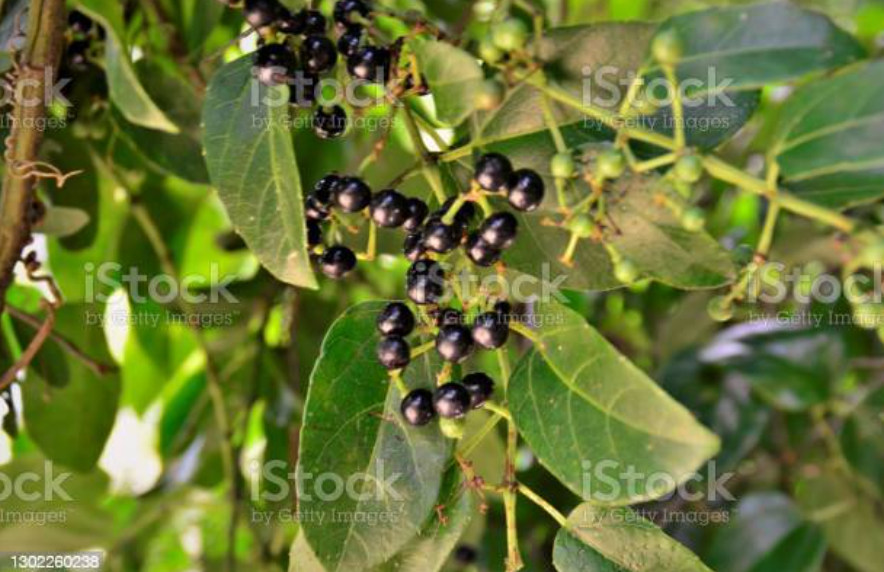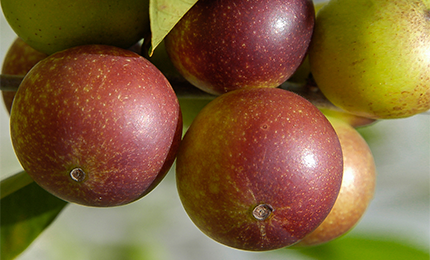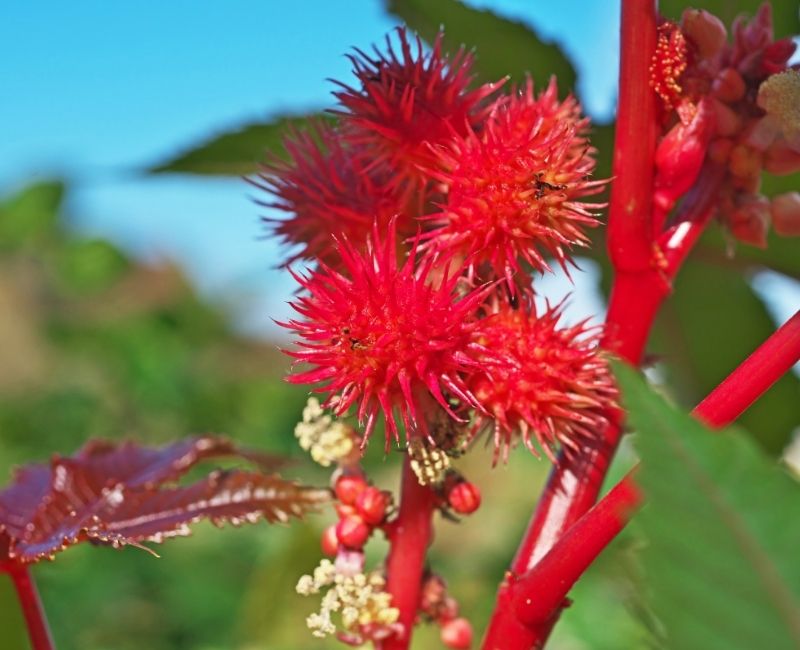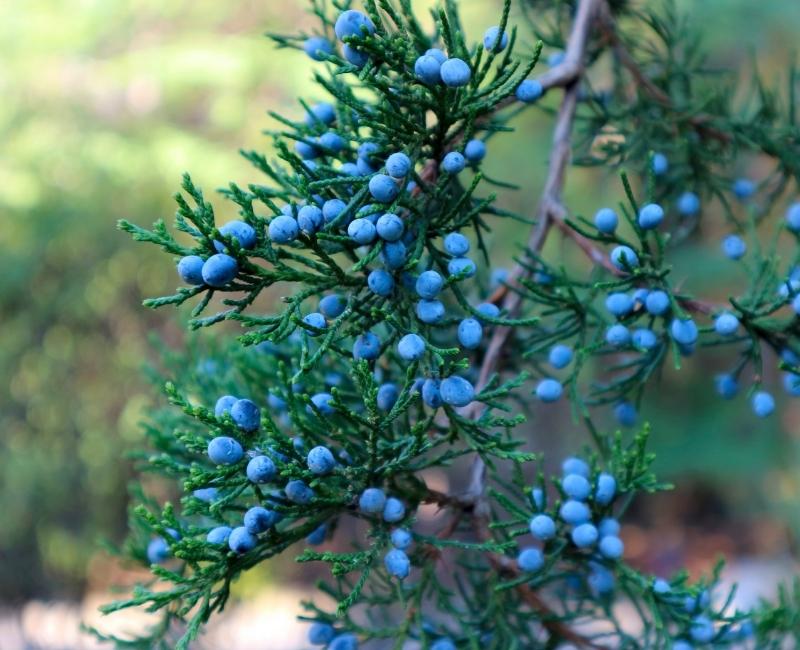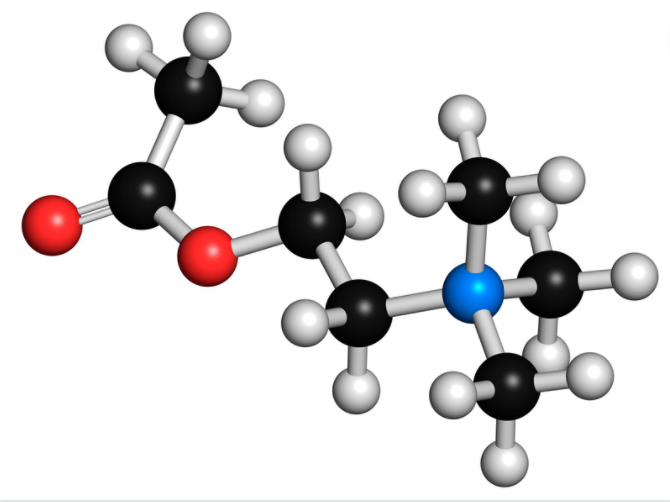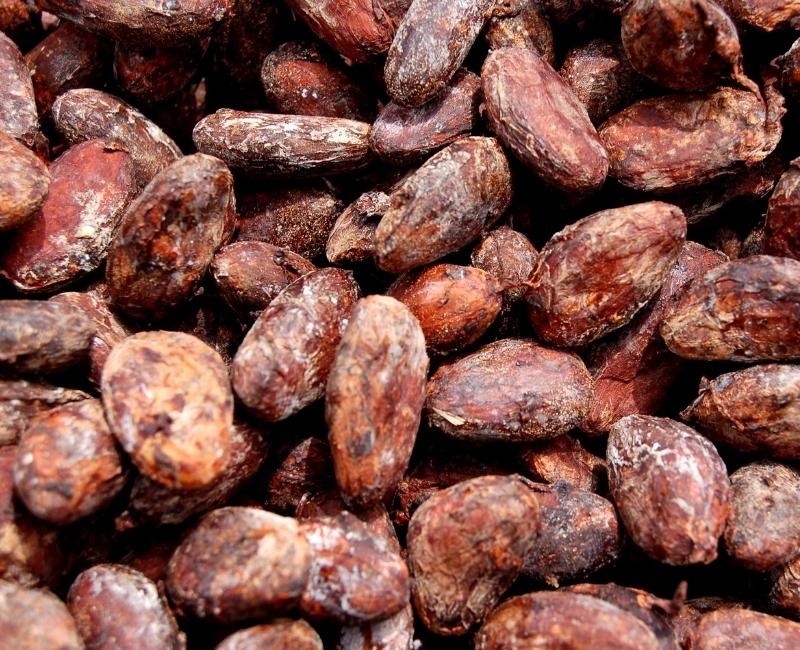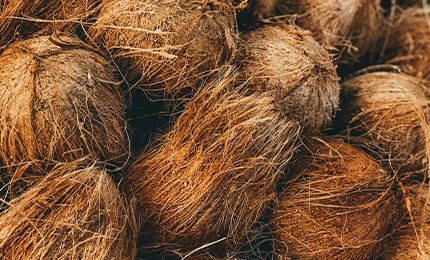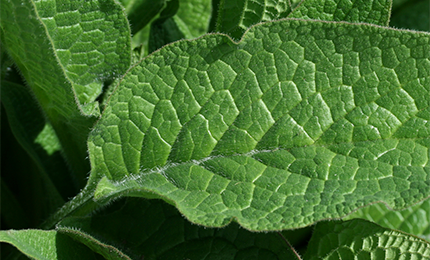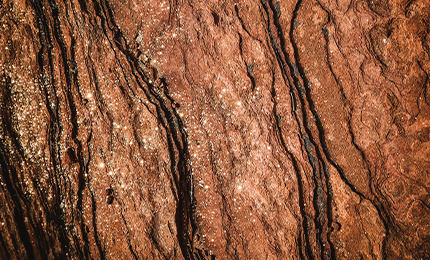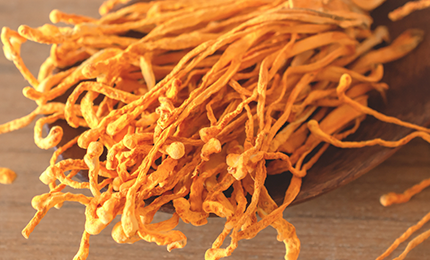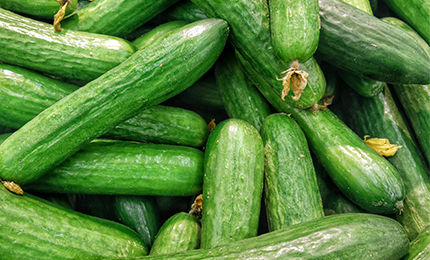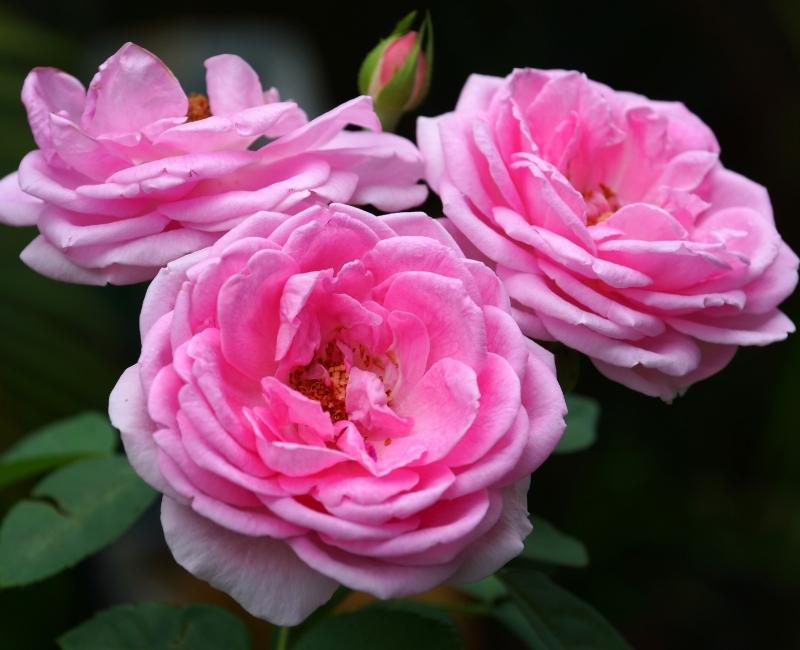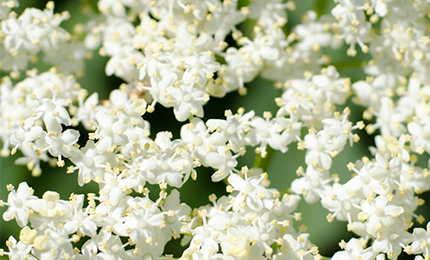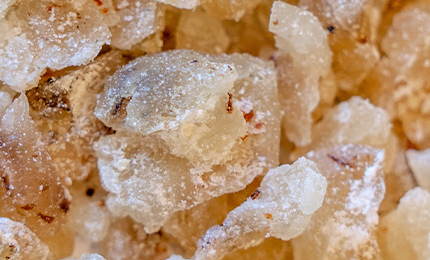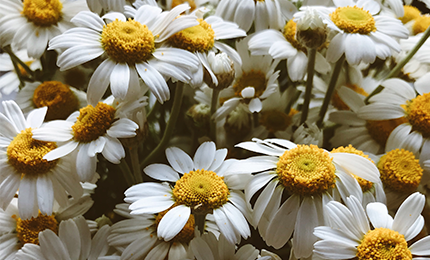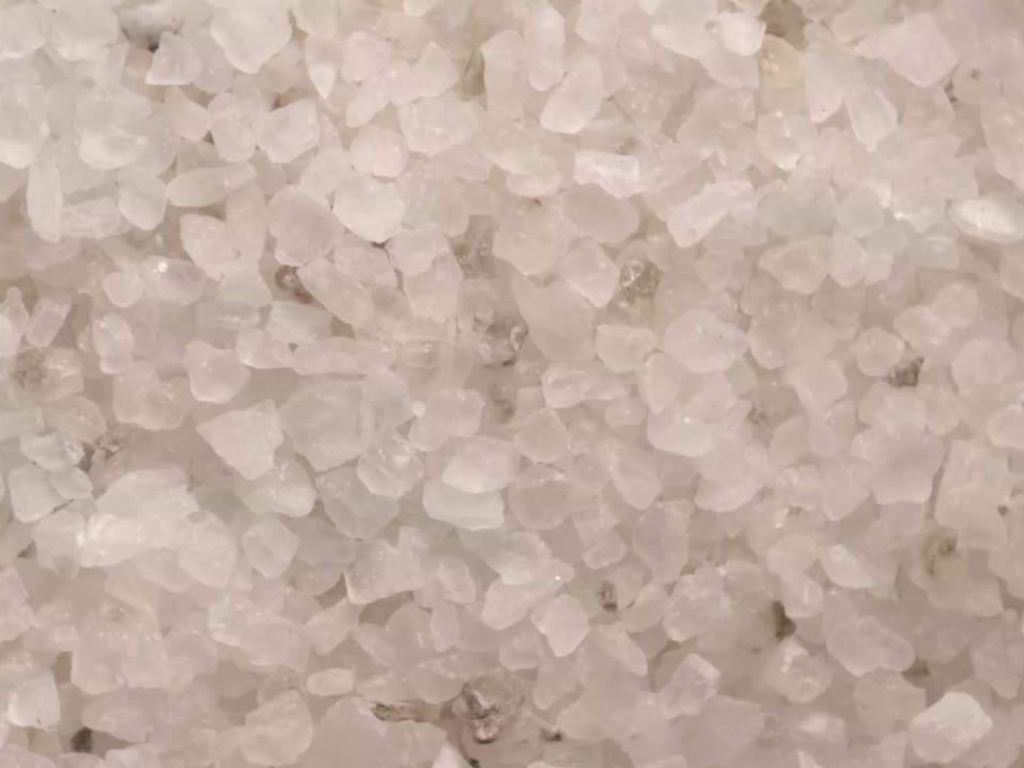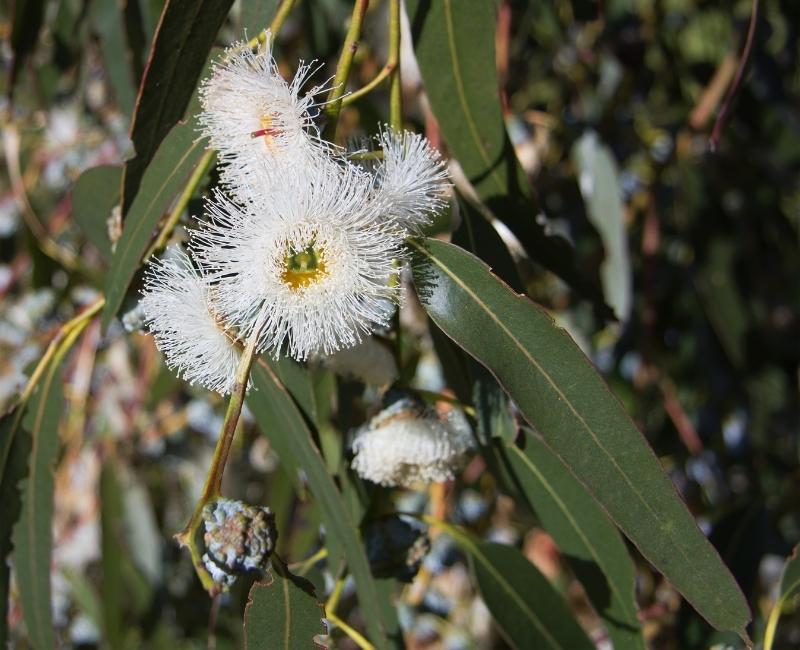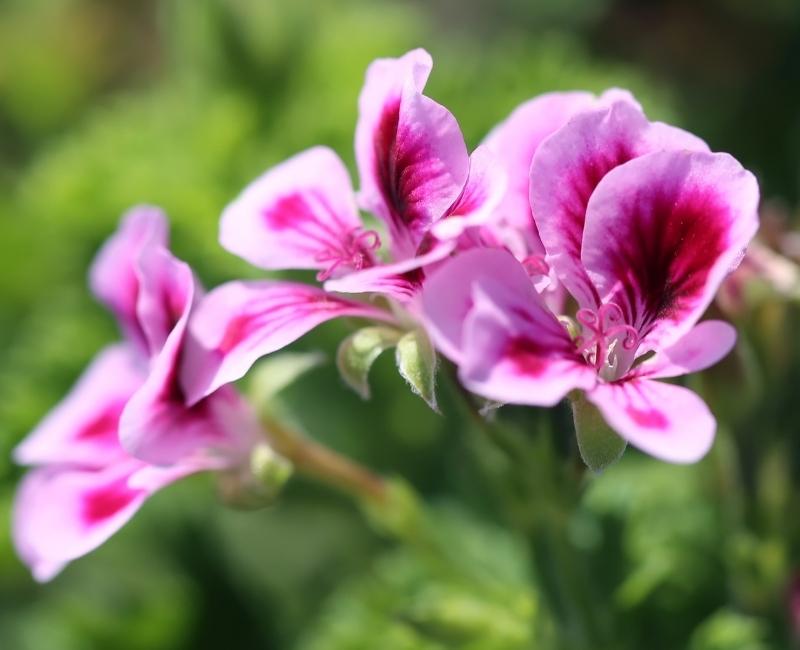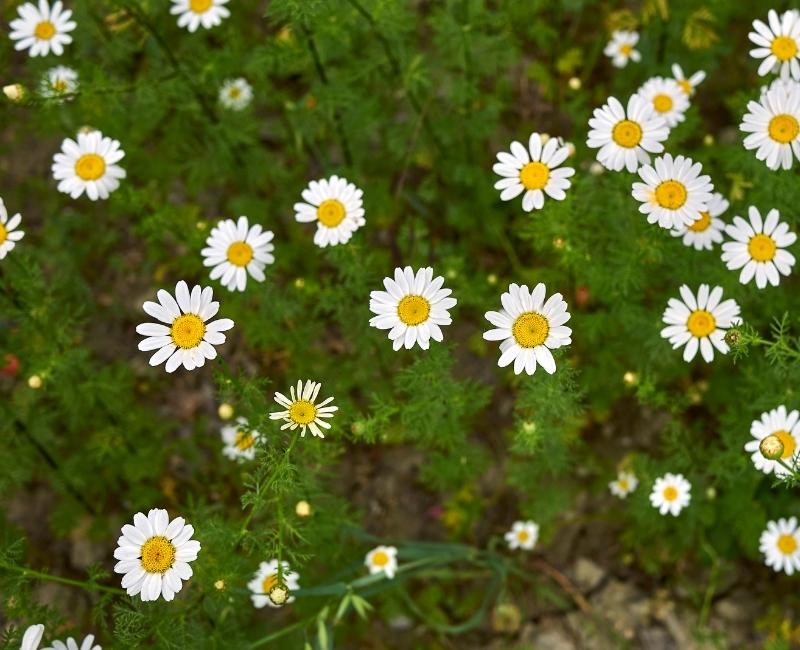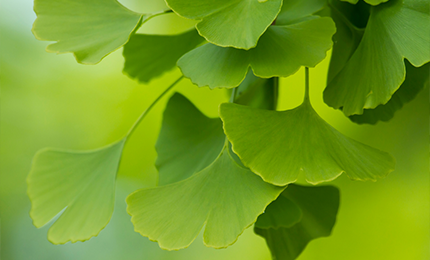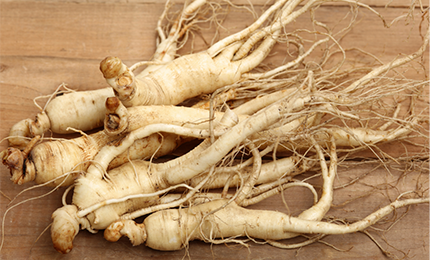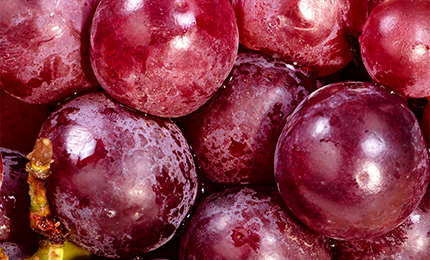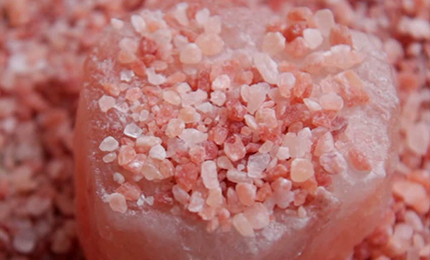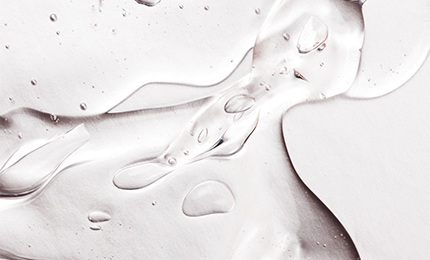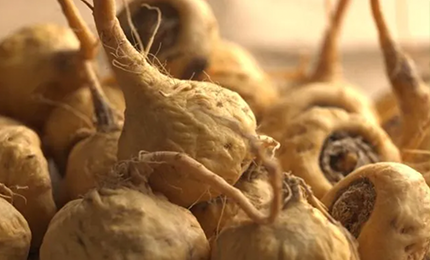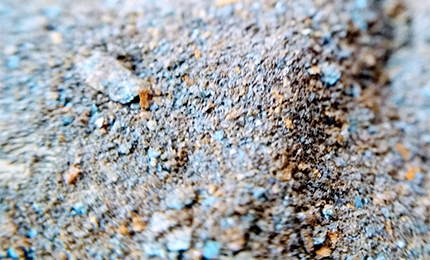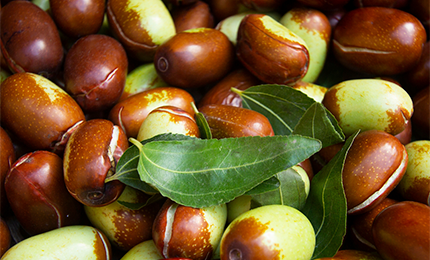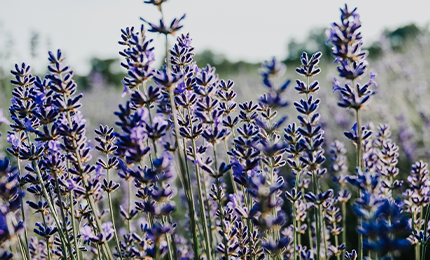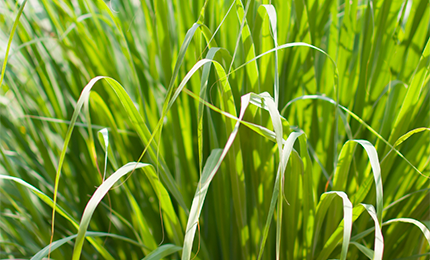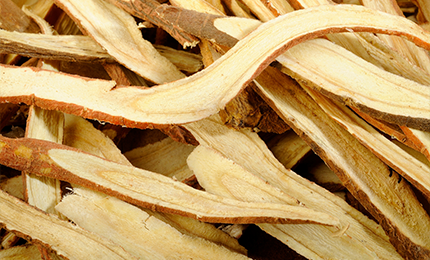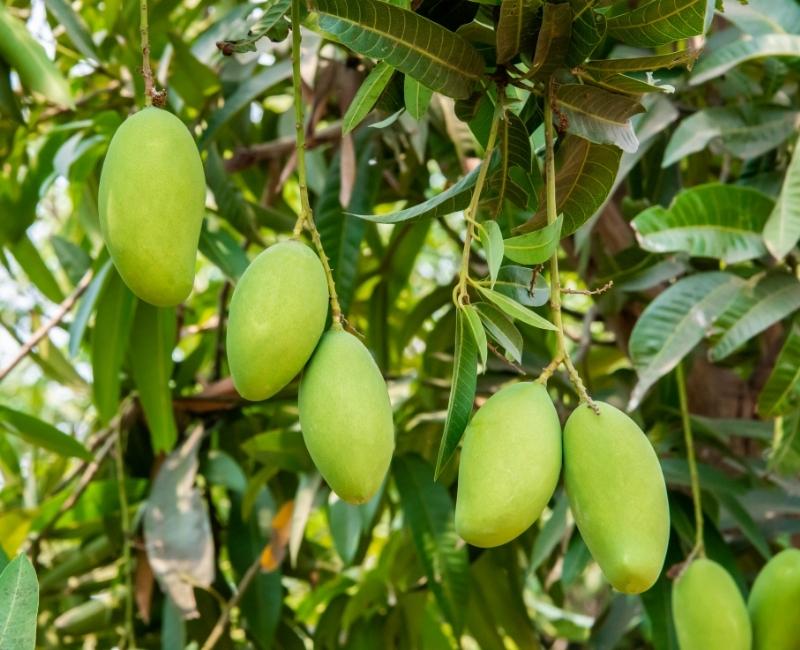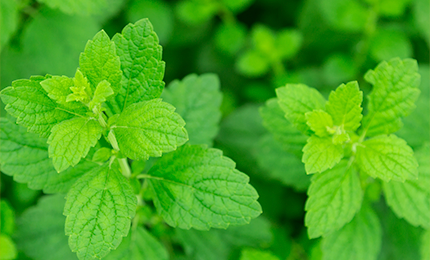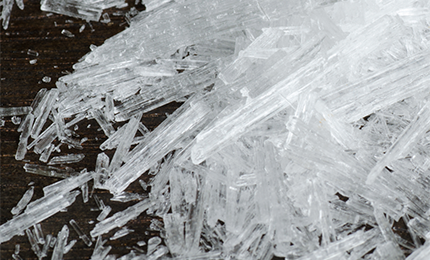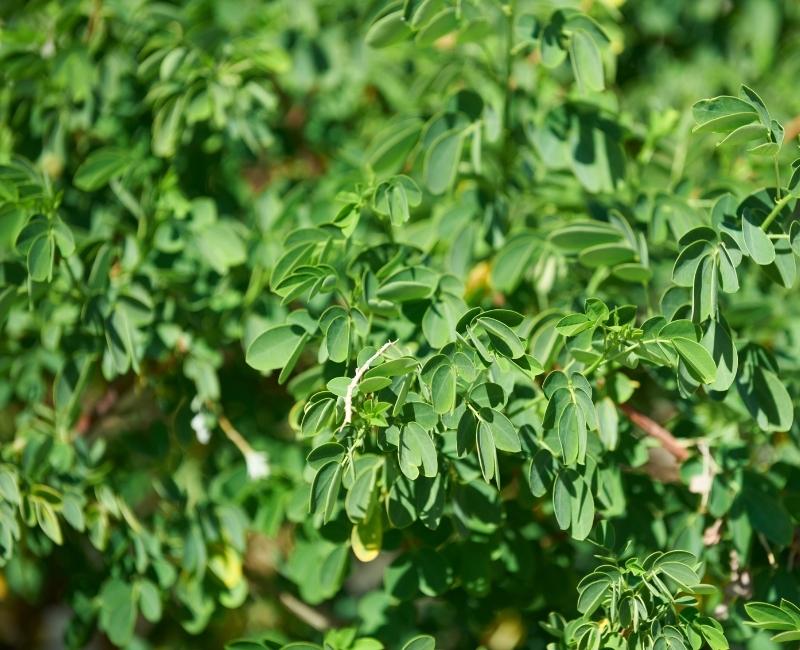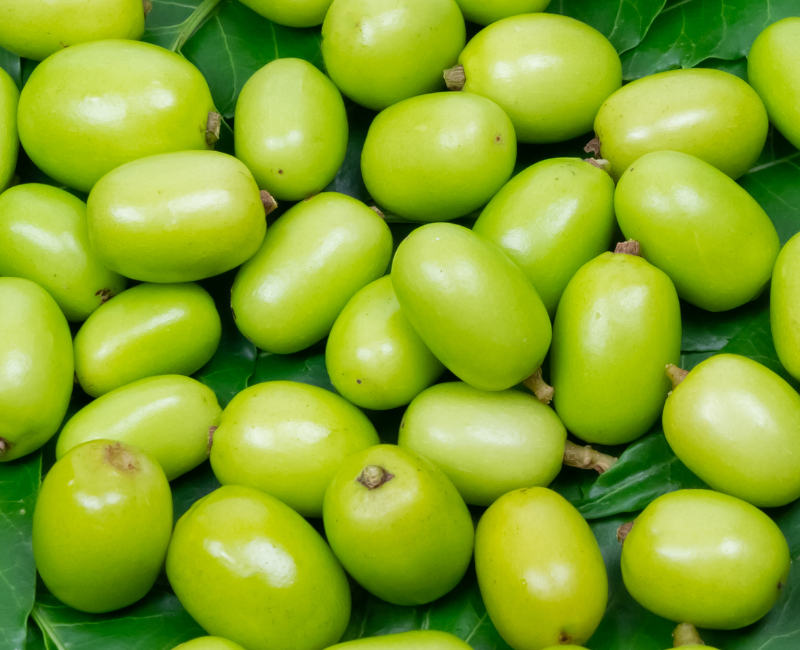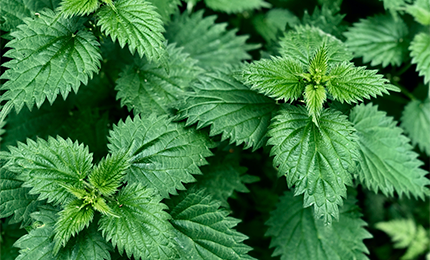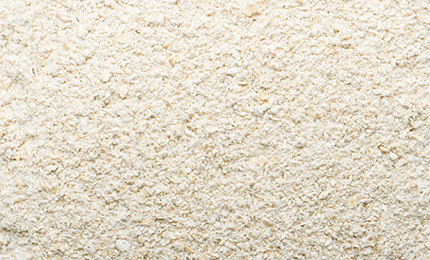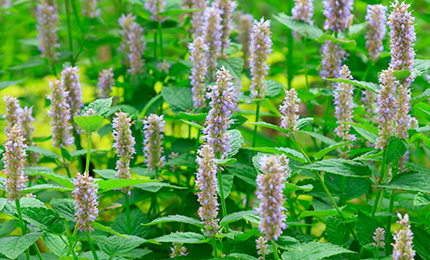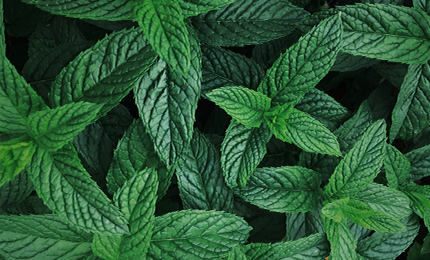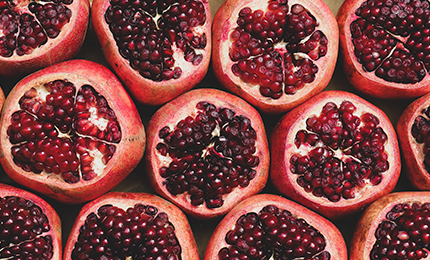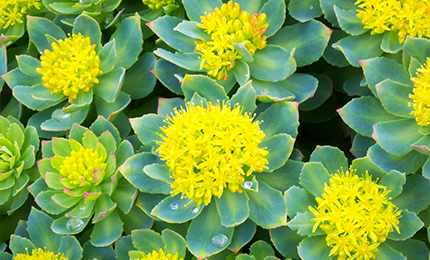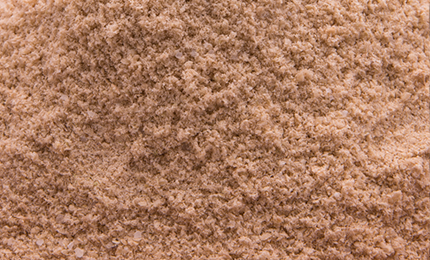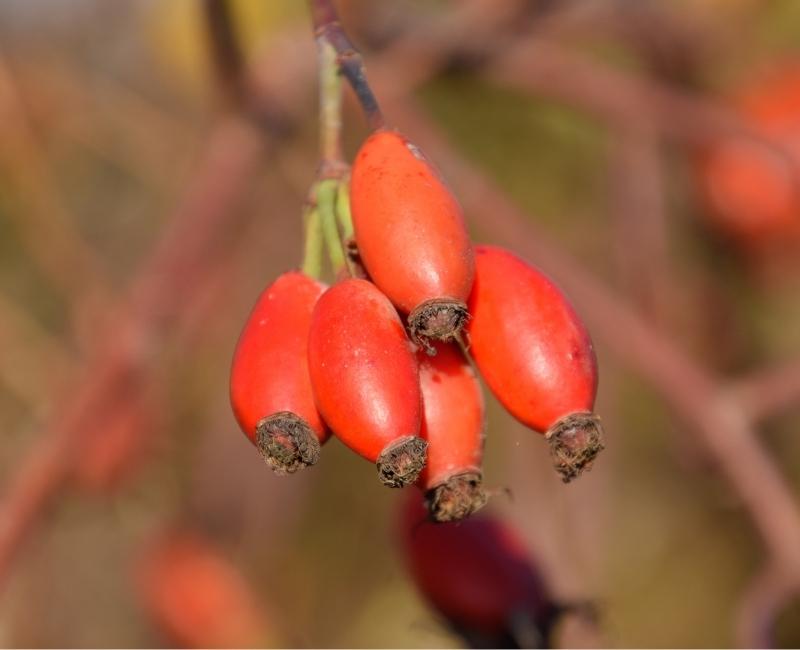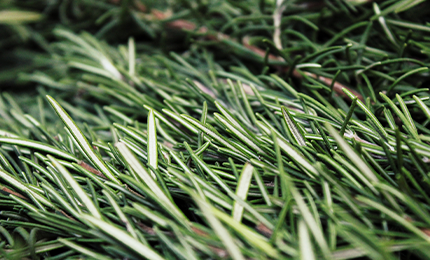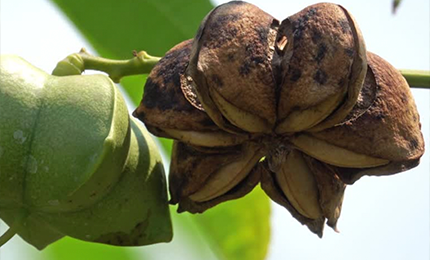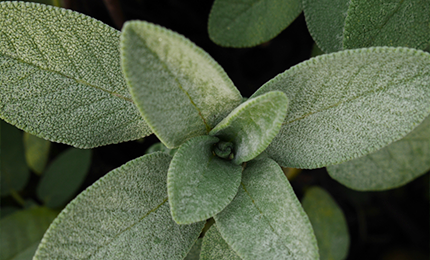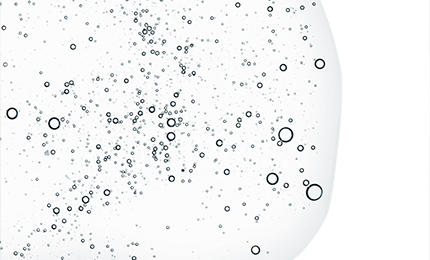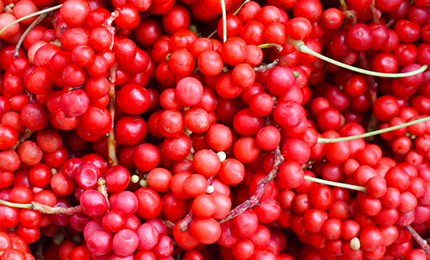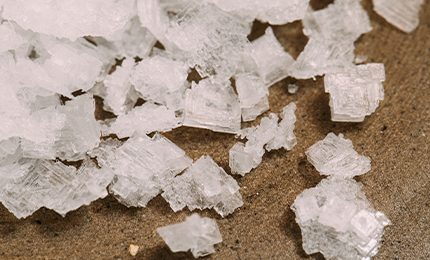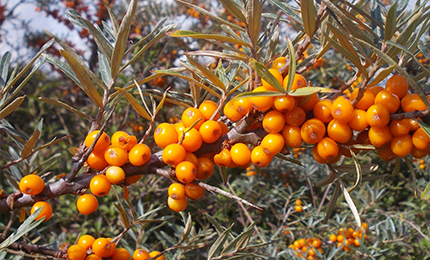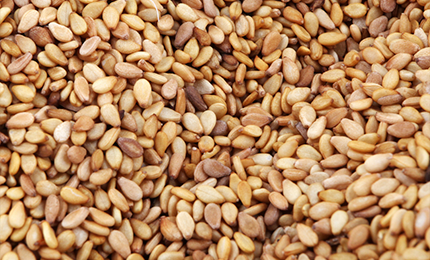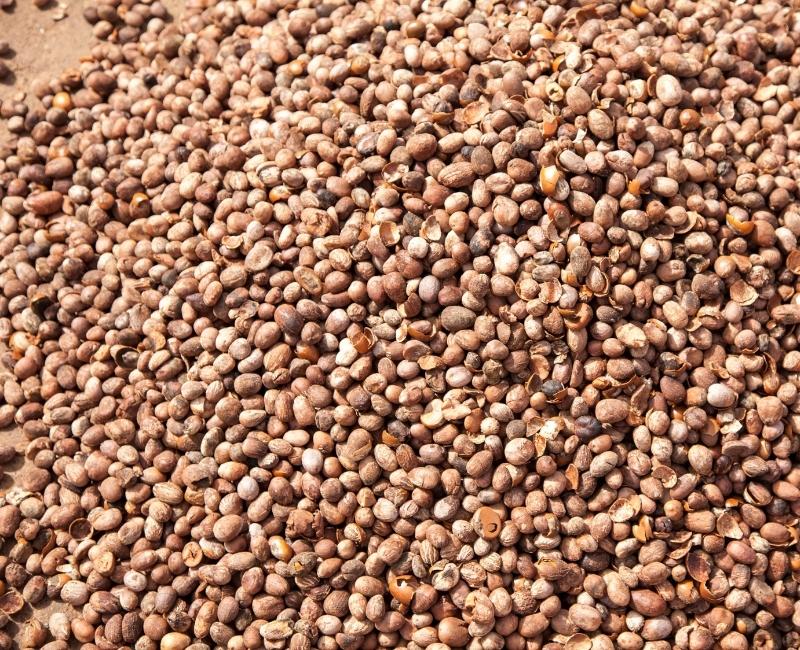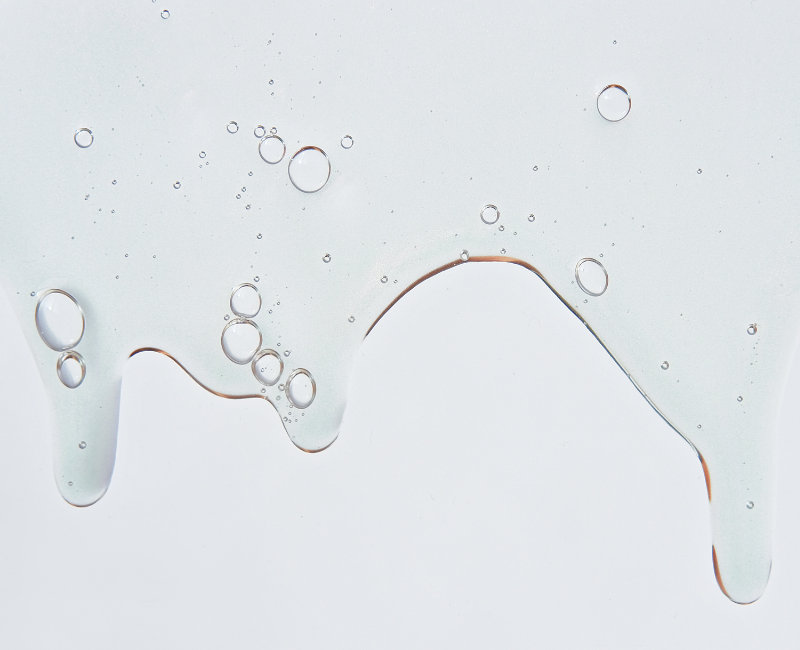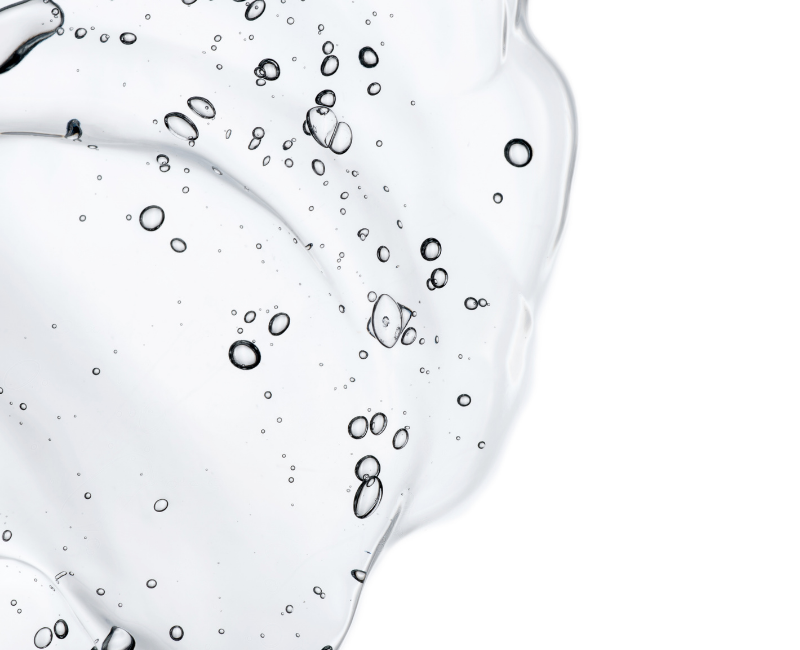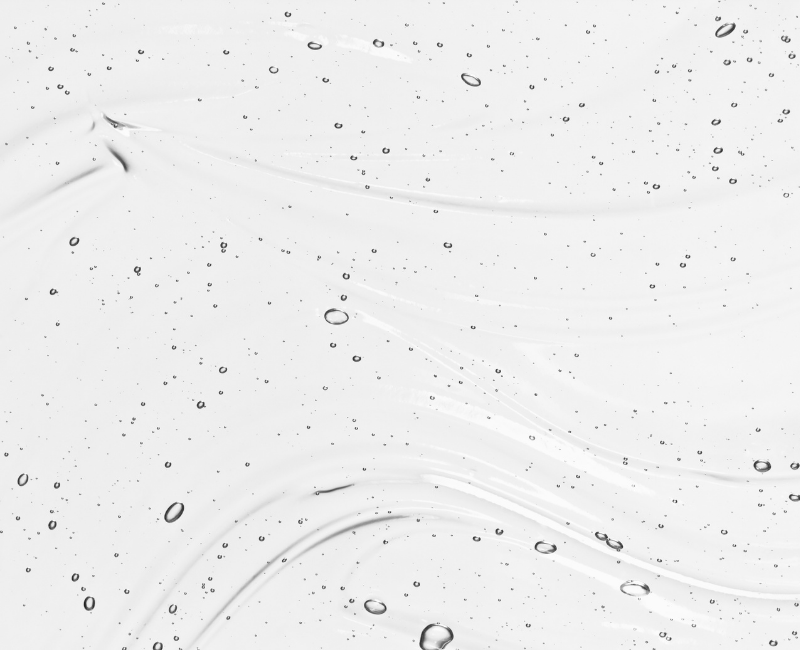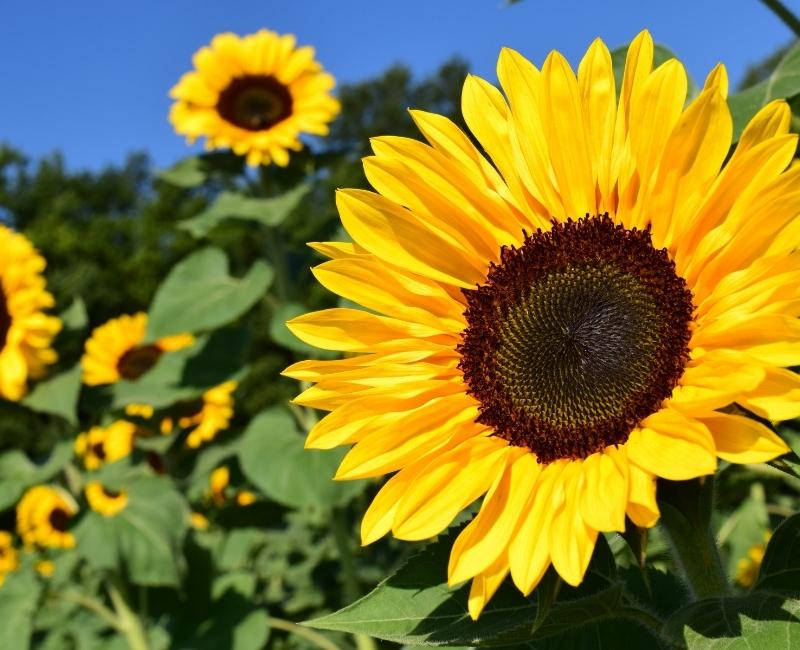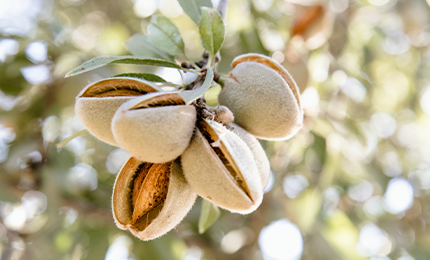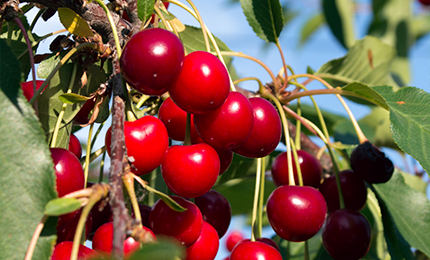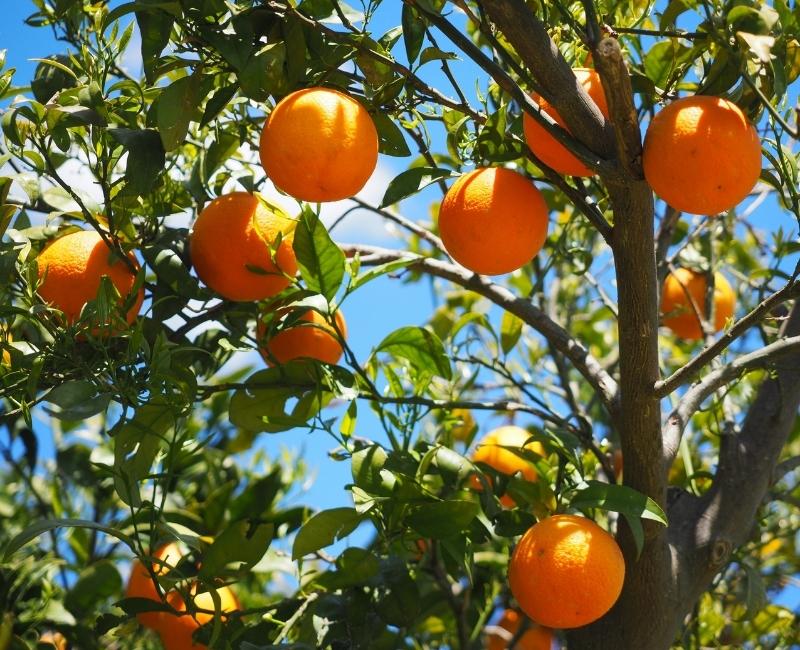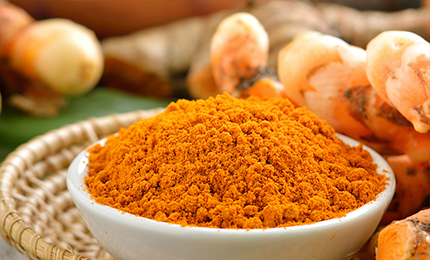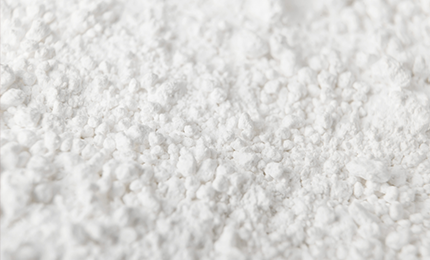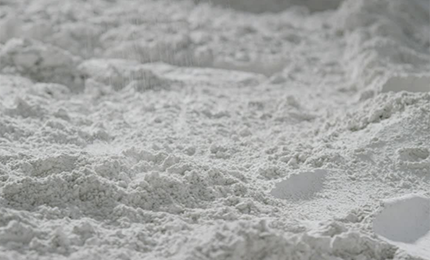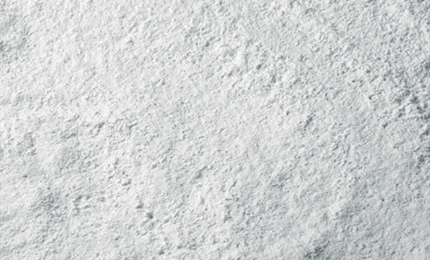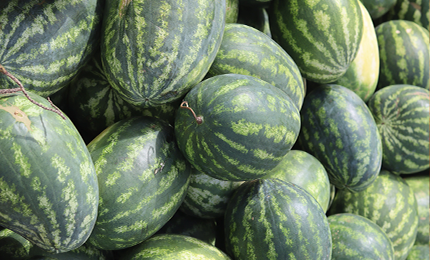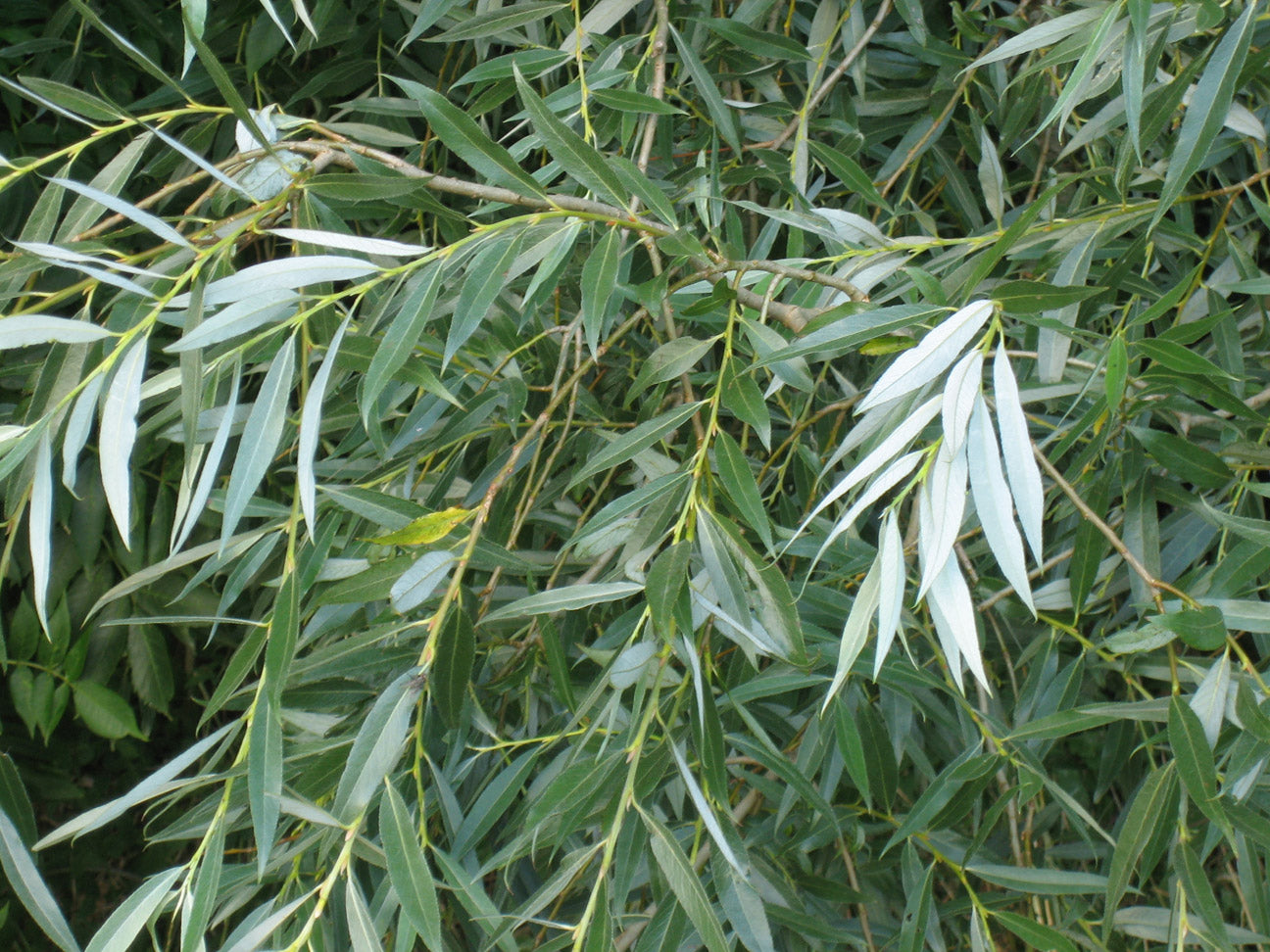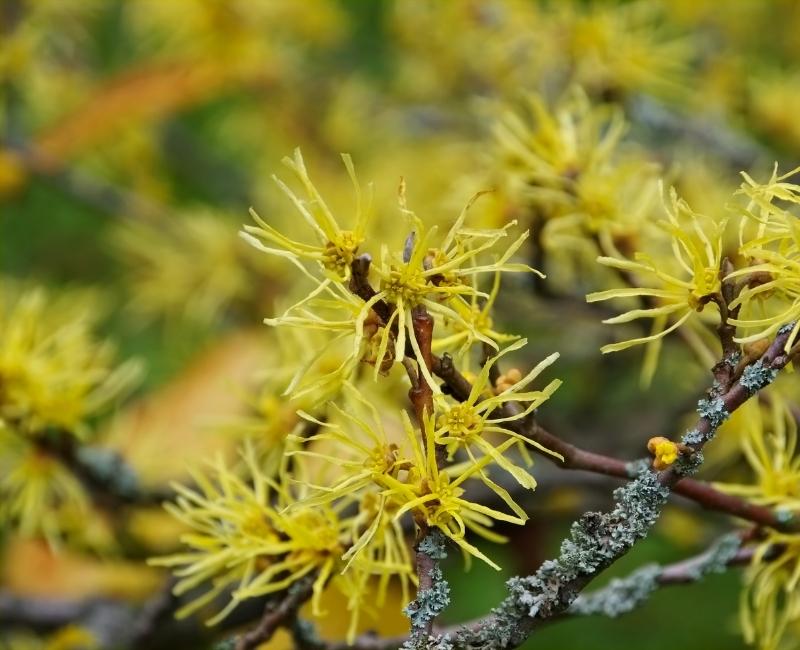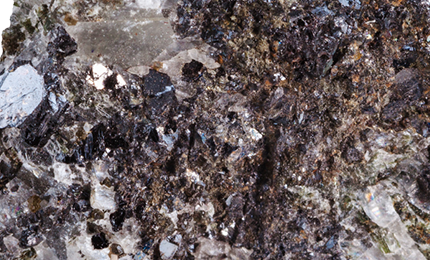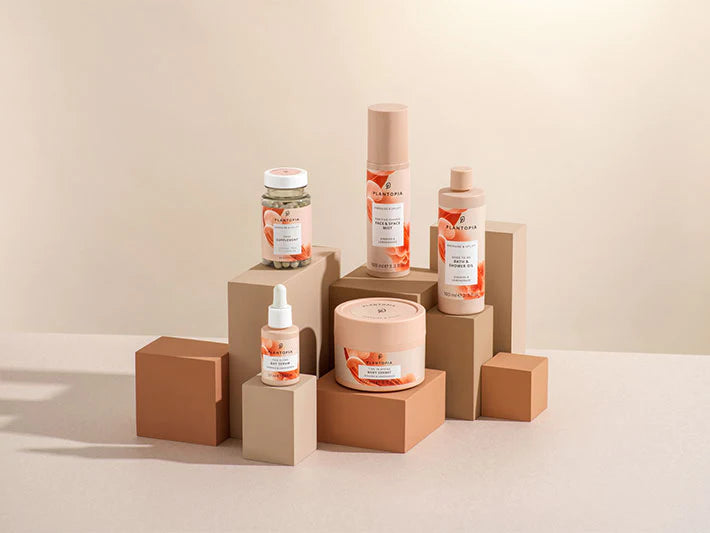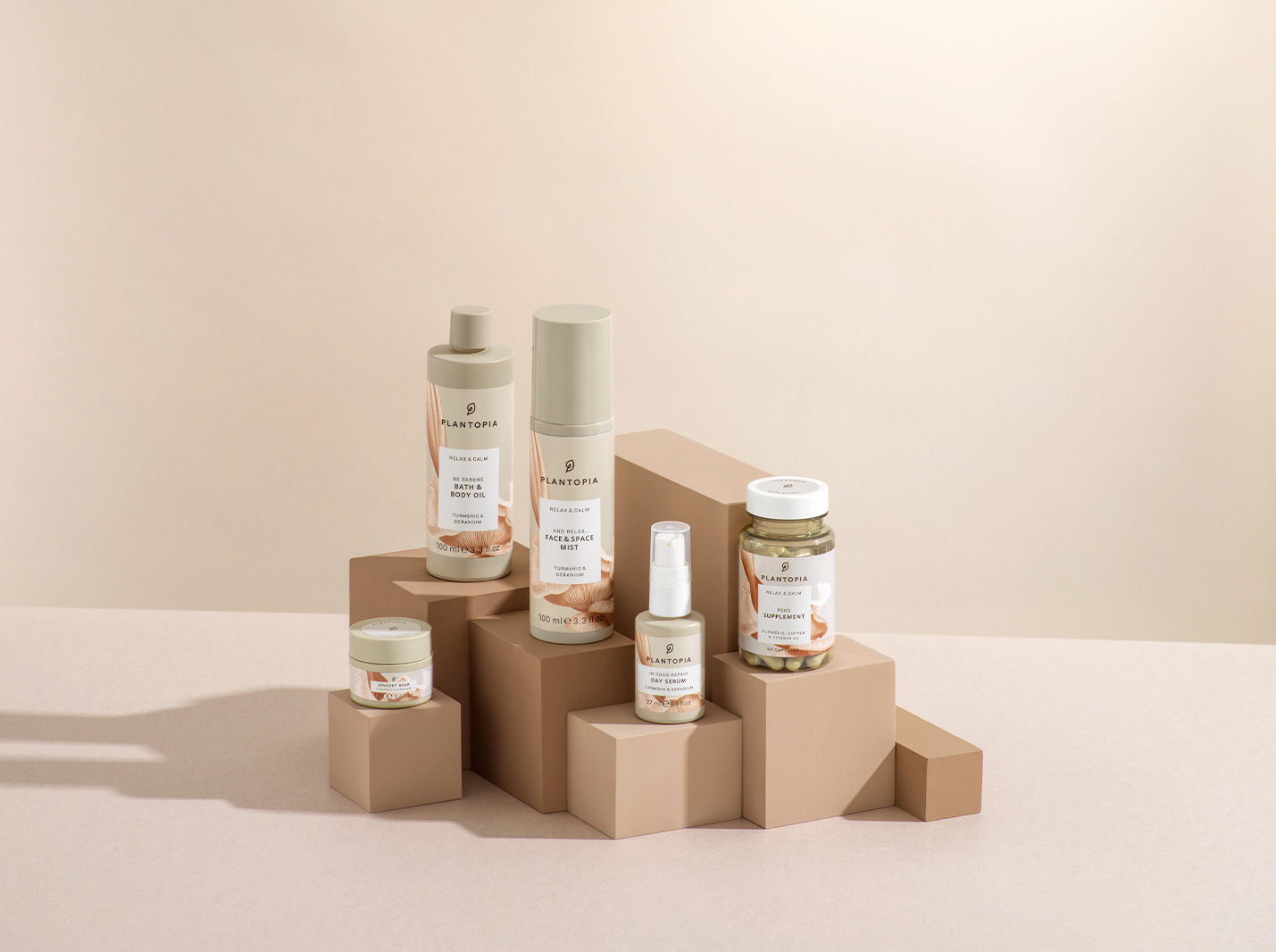This store requires javascript to be enabled for some features to work correctly.
A-Z
INGREDIENT GLOSSARY
Plantopia products are powered by a potent blend of adaptogens, essential oils, minerals, vitamins and actives to support your wellbeing. Browse our ingredients to discover how our products bring balance to your mind, body and skin.
Aloe Vera
Aloe vera’s skin care benefits are renowned: it cools, soothes and hydrates and moisturises. The large amount of water in the leaves is responsible for aloe’s cooling and hydrating properties, while trace elements and polysaccharides contribute to the soothing and moisturising properties. Aloe vera leaf juice or gel has traditionally been used to treat sunburn, blisters and burns. These traditional uses have recently been supported by scientific research into its healing properties. In fact, aloe vera contains over 200 active substances including skin-essential vitamins, minerals, enzymes and amino acids.
Alpha Hydroxy Acids
AHAs or alpha hydroxy acids are water-soluble acids that naturally occur in plants where they play a metabolic role. On skin, they provide a gentle chemical exfoliation, leaving it brighter and smoother. AHAs also increase the rate of cellular renewal and reduce the size of dead skin scales. Known for exfoliation, they can help to stimulate collagen and glycosaminoglycan production, skin chemistry that decreases as we age. AHAs are most concentrated in sugary fruits - our AHAs come from sugar, lemon orange and blueberry extracts.
Apple Extract
Apple fruit extract contains fruit acids (primarily malic acid) and polyphenols (including hydroxycinnammic acids and tannins). Current thinking is that the modern apple evolved from forests in central Asia, particularly in Kazakhstan. People are credited with some of the apple’s evolution: apples with desirable traits were spread along the trade routes between Asia and the Mediterranean. The remains of apples have been recorded by archaeologists at sites of human habitation dating back to 6,500BC.
Ashwagandha
An adaptogen, ashwagahdha is traditionally used to address conditions associated with stress and characterised by inflammation and oxidisation. A revered herb, ashwagandha is one of the most important in Ayurvedic medicine, used to enhance the body's resilience to stress.. Research as shown these activities are powered by unique chemistry, withanolids, which have been called natural steroids and have antistress, antioxidant, anti-inflammatory effects. The actives are most concentrated in the roots of the plant. One of Plantopia’s ashwagandha actives is certified organic and the roots are sourced from Oregon. The material for the other extract is grown in India.
Bakuchiol
The chemistry of bakuchiol is completely different to retinol, to which it is often compared, but its effects are very similar, helping to soften the appearance of fine lines and wrinkles, improve elasticity and firmness, even skin tone. Research indicates that bakuchiol triggers collagen production while reducing the enzymes that break elastin and collagen down. All without retinol’s propensity to irritate. Bakuchiol is an adaptogen derived from the seeds of Psoralea corylifolia or the Babchi, a plant to India with traditional uses in Ayurveda.
Baobab Seed Oil
Plant derived oils like baobab seed oil are excellent emollients, enhancing the barrier function of the epidermis, reducing the trans-epidermal water loss, retaining moisture and improving the elasticity of the skin. About 33% of the seed content is oil with oleic and linoleic acids as the major fatty acids followed by palmitic and linolenic acids. These giant trees are often called ‘arbre a palabre’ places where community elders meet to talk and resolve problems. Baobab has been a source of food, fibre and medicine for millennia: the seed oil itself has well documented cosmetic, medicinal and food traditional uses.
Barley Extract
Barley extract contains antioxidant phenols known for their skin protecting properties. Barley is among the most ancient cereal crops grown in the world today. Archeological evidence suggests the existence of barley in Egypt along the River Nile around 17,000 years ago. This member of the grass family is the fourth largest grain crop globally. The major phytochemicals in barley that have demonstrated health benefits include phenolic acids, flavonoids, lignans and vitamin E.
Bergamot
Bergamot brings a complex citrus note to fragrance with a rich, fresh, sweet-fruity top note followed by a herbaceous dryout. Commercially grown almost exclusively in Calabria, Italy, on a narrow coastal strip of land in the southern part of the region, bergamot's delicate and persistent odour has made it a popular ingredient for perfumery for centuries. It was a component of the original eau de cologne blend. When used in a concentrated form, it has a special fixing effect, which distinguishes it from other citrus essential oils.
Bilberry Extract
The bilberry or European blueberry has more common names than a con artist: blaeberry, wimberry, whortleberry, hurtleberry, myrtleberry, winberry or fraughan. A widespread shrub well outside of Europe, it appears in the northern hemisphere from continental Northern Europe, the British Isles and Ireland to northern Asia, Japan, Greenland, Iceland, Western Canada, and the Western United States. This cosmopolitan inhabitant of acidic soils pops up in heathlands, boggy barrens, degraded meadows, open forests, hummocky seepage slopes, and even moraines. High concentrations of antioxidant anthocyanins power this small berry’s skin supporting potential.
Bisabolol
Skin soothing and calming with proven anti-inflammatory activity, bisabolol helps to protect skin from daily environmental stress. It is a colorless viscous oil that is the primary constituent of the essential oil from German chamomile (Matricaria recutita) and occurs in many other plants. Our natural source bisabolol is nearly twice as effective as its synthetic equivalent.
Black Cumin Seed Oil
Nigella sativa is one the most revered medicinal seeds in history. Black cumin seeds were found in the tomb of Tutankhamun. Though black cumin seeds are mentioned in the Bible as well as in the words of the Prophet Mohammed, they were not carefully researched until about forty years ago. Since this time, more than 200 studies have been conducted in universities. The oil has been shown to be packed with bioactives including thymoquinone antioxidants. All of which contribute to its benefits on skin.
Borage Oil
Borage seed oil has one of the highest levels of skin moisture boosting gamma-linoleic acid (GLA) known in the plant world. Borage is easily grown from seed and due to the seed capsule’s habit of expelling seeds to the ground with some force, it is often self-sowing. As borage’s flowering period extends over several months with seeds on the same plant ripening and being expelled at different times, it is difficult to collect only ripe seeds in bulk, so crops are harvested just before the majority of the seeds become ripe. The riper the seed, the higher the GLA content.
Calendula
Whether extracted in water or sunflower oil, the bright orange blossoms of calendula are packed with impactful bioactives from flavonoids to carotenoid pigments to potent skin-soothing chemistry called triterpenoids. Research has shown these to be behind calendula’s anti-inflammatory, soothing and calming properties. The flowers are macerated and steeped in water or oil, then the plant solids are filtered off. Traditionally the waste plant material was returned to the land as a fertiliser.
Camphor Oil
Camphor oil is used in skincare its skin stimulating fragrance and properties. Cinnamomum camphora is a large evergreen tree with glossy, waxy leaves that reaches towering heights of 30 metres or more. Cinnamomum is the Greek name for cinnamon. The species name camphora means ‘of or pertaining to camphor’. The tree is widely cultivated in Asia for its timber as well as for camphor and camphor oil produced by steam distillation of the wood. The result of the steam distillation is frozen to crystallise the camphor which is removed to leave camphor oil behind.
Camu Camu
Camu-camu fruits are excellent sources of different bioactive compounds such as vitamin C, phenolic compounds and carotenoids. Polyphenols, bioactive chemistry that includes phenolic acid, flavonoids and tannins, are highly antioxidant. Similarly, the carotenoids found in camu-camu, including β-carotene, lycopene, lutein and zeaxanthine, are known antioxidants. Camu-camu fruits are also good sources of potassium, iron, calcium, phosphorous and various kinds of amino acids such as serine, valine and leucine. Plantopia’s camu-camu fruits are harvested in Peru.
Castor Oil
Castor oil is pressed from the beans of Ricinus communis, a plant with its roots in Africa and a global reputation as an ornamental plant. That’s in spite of most of the plant being poisonously toxic thanks to it’s phytochemical ricin. The unctuous seed oil is working to redeem the plant’s reputation, widely used in everything from skincare to drug delivery systems and wound dressings. Antioxidant and anti-inflammatory, the oil brings a viscous texture and effective moisturisation to products.
Cedarwood
Virginian cedarwood essential oil brings a sweet, balsamic note to fragrance blends. Distilled from the wood of the Eastern red cedar, a dense, slow-growing conifer native to the eastern United States, the essential oil has a mild, somewhat balsamic note characteristic of the timber, becoming woodier and less balsamic as it dries out. Eastern redcedar is actually a species of juniper, Juniperus virginiana, and not a true cedar. It is a pioneer species: one of the first trees to colonise wasteland and disturbed ground, succeeding in part because of its drought and cold tolerance.
Choline
Choline is a nutrient found in many foods that is essential for the efficient function of the human body. It’s used by our brains and nervous systems to regulate mood, memory and muscle control. Choline is also a part of forming cell membranes. While our bodies make a small amount, most of the choline in our bodies comes from our diet – poultry, meat, dairy and cruciferous vegetables (the broccoli and cabbage family) are primary sources. Supplementing the choline in your diet ensures your body has access to plenty when it comes to performing those important functions.
Cloudberry Seed Oil
Cloudberries grow in Arctic marshes. Despite harsh winter weather conditions and temperatures that can fall below -40 degrees centigrade, cloudberries are able to thrive and remain highly potent in their concentrations of vitamins and antioxidants. This richness in vitamins, phytosterols, and antioxidants powers the cloudberry’s reputation for immune boosting going all the way back to the time of the Vikings. Vitamin E rich cloudberry seed oil is a by-product of the pressing of these small, yellow, arctic berries with even tinnier seeds for juice. Food waste ingredients like this not only upcycle waste, but through more complete use of a resource add value to the supply chain.
Coconut Oil
Coconuts are what botanists call cosmopolitan – they have populated the coastal areas of the globe wherever the conditions for growth are right. This is thanks to a seed with a protective husk that is designed to float. Inside that seed is ‘milk’ and solid flesh called the copra which is about 65% lipid – the perfect energy store for new life. That lipid or oil is mostly saturated fat, specifically medium chain fatty acids with a tiny amount of vitamin E and pretty much nothing else – extra antioxidants and protective chemistry aren’t necessary when the seed’s protected by a thick husk and a rigid shell.
Comfrey Leaf Extract
Comfrey extract promotes healthy skin. It has been used for centuries for its skin-calming and astringent properties, applied topically in poltices and salves to treat everything from superficial abrasions and bruises to broken bones and torn cartilage. According to herbal urban myth, three great British historical figures owe their lives to comfrey: Richard the Lionheart, the Black Prince and Henry VIII all had their battle wounds treated with comfrey. Contemporary research supports comfrey’s use as a treatment for abrasions and superficial dermatological wounds, citing the presence of the active principle allantoin as lying behind the efficacy.
Copper
Copper is the earth’s 26th most abundant element. It is involved in numerous physiological and metabolic processes critical for the functioning of almost all tissues in the human body. In the skin, copper is involved in the synthesis and stabilization of extracellular matrix skin proteins. Copper plays a role in detoxifying as well as promoting skin integrity.
Cordyceps
Cordyceps is a parasitic fungus found primarily at high altitudes on the Qinghai-Tibetan plateau and the Dolpo mountains of Nepal. The active components of the cordyceps are in the stroma of the fungus – the equivalent of the fruit of the fruit tree. An adaptogen known for enhancing immune function and metabolism and antioxidant activity, cordyceps is potently bioactive thanks to its cordycepic acid, adenosine, cordycepin and polysaccharides.
Cucumber Juice
Plantopia’s organic cucumber juice is pressed in Ross-on-Wye by an expert team of ingredient extractors. They use a large quantity of fresh organic cucumber and work closely with a trusted organic produce specialist who provide UK grown cucumbers during the summer months, and choose the best from their partners in mainland Europe outside the UK harvest window - usually France or Spain. A cucumber is 90-95% water: the remaining 5-10% is composed of iron, potassium, vitamin C and vitamin A. Most of the vitamin A in a cucumber is in its rind. It’s why the extract is calming, hydrating and refreshing.
Damask Rose Flower Water
Rose flower water, or hydrolat, is obtained during steam distillation of rose petals where the resulting essential oil is removed to leave the hydrolat. Historians suggest that the techniques for distilling rosewater probably evolved in third and fourth century Mesopotamia. Certainly by the ninth century, large-scale damask rose cultivation and distillation of rosewater was taking place in Persia, although it is the tenth century physician, Avicenna, who is commonly credited with its discovery. The levels of water in rose flower water account for its hydrating properties, while the minor constituents extracted from the rose petals contribute to skin-toning.
Elderflower Extract
The blossoms for Plantopia’s organic elderflower extract are wild harvested in Bulgaria. The flowers are collected by individuals in various villages and then centrally processed by a family business before being sent to Ross-on-Wye, England where they are extracted. The elderflower blossoms are also certified FairWild. FairWild certification is a third-party audited system that not only requires a commitment to annual onsite visits by authorised certification bodies. Over a five year period, the certified operations demonstrate their commitment to the FairWild Principles and Criteria, putting in place the building blocks of a sustainability system and meeting increasing requirements year-on-year to achieve full certification.
Elemi
Elemi has a spicy, peppery, lemony fresh top note with a green facet. From the Philippines, it is exclusively sustainably harvested both from the wild and from cultivated trees planted over the past 30 years by small independent farmers. Collectors tap the trees by cutting the bark with a knife and scraping off the gum that accumulates in the wound over several days. Collection is concentrated between July and March, when the yields are highest, leaving the trees to regenerate during the remainder of their growth cycle.
English Chamomile
For millennia both the extract and essential oil of chamomile have been used to calm and soothe inflammation and upset. Activity supported by research which shows the central disc of yellow florets contains chamazulene and the flavonoids apigenin and luteolin which have demonstrated anti-inflammatory activity. The single flowered variety has more of the active ingredients than the double flowered variety with its haze of white petals, so the former is grown for extracts and the latter for the essential oil with its sweet, warm apple-like note.
Epsom Salts
Calming Epsom salt, aka magnesium sulfate, is made up of magnesium, sulphur and oxygen. The name comes from Epsom, Surrey where the salt was discovered. Topical magnesium delivery through bathing is one of the oldest forms of therapy for skin diseases. Research indicates that magnesium penetration increases with time, and that hair follicles contribute significantly towards magnesium penetration into the skin.
Eucalyptus
Eucalyptus globulus, which is the species we use, is the primary source of medicinal eucalyptus essential oil. Uplifting, it has camphoraceous, pungent, sharp, fresh and green, notes. The name Eucalyptus comes from the Latin for ‘well covered’, a reference to the shape of the flower bud. They grow in a wide range of conditions, which is one of the reasons why they are so successful wherever they have been introduced world-wide. Eucalyptus grows rapidly, with trees reaching towering heights of 150m.
Geranium
We source our geranium from a single field in Egypt where our supplier works to ensure sustainable supply through their responsible sourcing program. Cultivation is in a desert area where water availability is scarce and strictly managed. Drip irrigation feeds water and nutrients directly to the roots, minimising evaporation and water loss. By cultivating in this area, our supplier provides job opportunities in an area with a lower concentration of industry, using land otherwise not used for agriculture, freeing up land in higher water areas for thirstier crops.
German Chamomile Flower Extract
Plantopia’s organic German chamomile comes from a thriving project in the Egyptian desert, where the cultivation of specific crops is managed as part of a biodiversity programme that aims to rebuild soils and create sustainable communities around functioning agriculture on once uninhabitable land. Both the volatile essential oil and the extract of this widely used medicinal herb have high levels of activity. It’s one of German chamomile’s main constituents, Bisabololoxide A, that is behind some of the extract’s soothing and anti-inflammatory bioactivity.
Gingko Extract
Research indicates ginkgo extract may help to reduce inflammation of the skin. Ginkgo contains glycosides which are known antioxidants. The last species of a genus and family that dominated the globe 200 million years ago, the maidenhair tree Ginkgo biloba is a living fossil that has been traced back to two small areas in the Tian Mu Shan Reserve in Zhejiang province, eastern China. Analysis of fossilised leaves indicate that the tree has remained unchanged for 150 million years, since dinosaurs roamed the planet. Leaves for extraction are harvested in the spring and summer months while they are still green.
Ginseng
A millennia-old mainstay of Traditional Chinese Medicine, the healing benefits of ginseng were so widely known that when Linnaeus gave the plant its genus name, he chose 'panax' - all heal in Greek. Most associated with stress-compensating energising and stimulating activities, clinical studies have confirmed that adaptogenic ginseng can impact endurance, fatigue, coordination and reaction time. The name ‘ginseng’ has become a brand name so associated with adaptogenic effectiveness that it’s attached to other adaptogens (ashwagandha is also known as Indian Ginseng). Some of the ginseng for our extracts is grown in South Korea where the root is harvested after 4 to 6 years of growth.
Grapeseed
Lightweight in texture, grapeseed oil is rich in skin-supporting chemistry including phytosterols, phenolic compounds, fatty acids, and vitamins particularly protective antioxidant vitamin E. Grapeseed oil is a byproduct of the juicing of grapes for juice and wine. Seeds take up more of wine grape varieties than table grapes, around 20% of the fruit on average. And each seed contains around 20% oil. By formulating with byproducts, we reduce waste and ensure more complete use of a crop.
Himalayan Pink Salt
Pink Himalayan salt is a type of rock salt from the Punjab region of Pakistan, near the foothills of the Himalayas.Pink Himalayan salt is chemically similar to table salt. It contains up to 98 percent sodium chloride. The rest of the salt is made up of trace minerals including potassium magnesium, calcium and iron, which give the salt its pale pink tint. Salt has been used as a therapeutic treatment for skin, muscle and mind since ancient times in cultures and pharmacopoeia across the globe.
Hyaluronic Acid
Hyaluronic acid (HA) is a humectant cellular lipid the body makes which holds onto water, giving skin bounce and contributing to proper hydration. It acts as a cushion and a lubricant and is found across the body in joints, eyes and tissues, however the body’s production of it slows with age. Supplementing HA can help increase skin moisture and reduce the appearance of fine lines and wrinkles. One gram of HA can hold up to 6 litres of water.
Inka Maca
Plantopia’s inka maca is sourced from a project in the Peruvian high Andes. Our supplier works with native communities to promote their development and quality of life, supporting environmentally and socially responsible behaviour in the cultivation of this crop. Maca is native to the inhospitable heights of the high Andes, growing at altitudes of between 3,800 and 4,800 metres above sea level where very few plants are able to grow. Survival in this extreme environment produces enormous phytochemical activity, including unique macamides and macaenes, alkaloids, phytosterols plus 18 to 19 classes of amino acids.
Iron
Plantopia’s inka maca is sourced from a project in the Peruvian high Andes. Our supplier works with native communities to promote their development and quality of life, supporting environmentally and socially responsible behaviour in the cultivation of this crop. Maca is native to the inhospitable heights of the high Andes, growing at altitudes of between 3,800 and 4,800 metres above sea level where very few plants are able to grow. Survival in this extreme environment produces enormous phytochemical activity, including unique macamides and macaenes, alkaloids, phytosterols plus 18 to 19 classes of amino acids.
Jojoba Oil
Jojoba is pressed from the seeds of a dense, evergreen shrub native to the Sonora Desert of Mexico, Arizona and California. Around half of the seed is a pale yellow oil made up of 98% liquid waxy esters. Where most plant oils are made up mainly of triglycerides, these esters make jojoba a very unique plant oil, and similar in composition to the sebum produced by human skin. It forms part of the Native American pharmacopeia and was documented as a treatment for cuts, scrapes, sunburn and dry skin.
Lavender
Fresh, aromatic, sweet, floral, herbaceous and slightly fruity, the distinctive notes of lavender essential oil have been used in beauty and wellness for millennia, soothing and calming skin and spirit. The wealth of anecdotal evidence supporting lavender’s benefit as a mild treatment for insomnia has been substantiated by science, with the effect attributed to the levels of linalool in the essential oil. More than that, lavender has been shown to improve the quality of sleep, not just the quantity. Our lavender essential oil is sourced from France and Hungary.
Lemongrass
Plantopia sources lemongrass essential from Guatemala where our supplier works to ensure sustainable supply through their responsible sourcing program. The essential oil is steam distillation from lemongrass stems and leaves. A closed recirculation circuit with cooling tower is used to maximise water efficiency. Wastewater is treated and used for gardening purposes. Our supplier is carbon neutral, they have found a method of producing energy from their waste. They have invested in a biodigester to generate biogas from bio waste. The sub product from the process is an amazing fertilizer which is then distributed to the producing communities.
Magnesium
Magnesium is a natural antistress mineral that increases communication between cells, helping our bodies to function more optimally. It has been recognized as a cofactor for more than 300 enzymatic reactions, and its benefits continue to be the subject of research and scientific publication. Ingested, magnesium plays a role in supporting deep, restorative sleep by maintaining healthy levels of GABA, a neurotransmitter that promotes sleep. Research indicates supplemental magnesium can improve sleep quality, especially in people with poor sleep.
Mango Butter
Mango butter is a by-product of the mango processing industry, adding value not just to food waste (and reducing the mountain of mango kernels), but to the entire supply chain. At the same time, Plantopia is using an oil with a high percentage of tocopherols, phytosterols and triterpenes that delivers a naturally occlusive, protective skin barrier and actively replenishes moisture, helps to restore a sufficient layer of skin lipids and increases skin hydration.
Melissa Flower Extract
Plantopia’s melissa or lemon balm is sourced from Albania where it’s organically grown. A perennial herb with leaves that smell mildly of lemon when they are crushed, melissa gets its name from the Greek for ‘honey bee’, or simply ‘bee’, as the abundance of flower nectar it produces is a major attractant to bees. Studies have shown soothing melissa possesses high amount of antioxidant activity, driven by a rich phytochemistry that includes high levels of flavonoids, rosmaric acid, gallic acid, and phenolic content.
Menthol Crystals
The cooling effect of menthol on the skin is due to it stimulating temperature receptors in our bodies. Working in the same way that the receptors for smell and taste do, the receptors attach to a molecule of cool-feeling menthol. This effects a change at the cellular level, which in turn causes a nerve impulse, which tells us that menthol is cooling. Menthol is an organic compound extracted from mints, principally cornmint, through freeze crystallisation of essential oil. Menthol can be synthetically produced, but two-thirds of global menthol production is from natural source.
Moringa Seed (Oil and extract)
There is a great deal of debate around the origins of the moringa tree: although nearly everyone agrees its native range is northern India and northeastern Pakistan in the sub-Himalayan regions, it may have had a huge range including all of Asia minor, Africa and Arabia. Plantopia uses not only the lightweight seed oil, rich in essential fatty acids and antioxidants with moisturising properties, but also proteins extracted from the seeds for their purifying and protective peptides.
Neem Seed Oil
Neem is thought to be native to the Indian subcontinent and dry areas across South Asia. Seeds and plants travelled along trade routes and with the Indian diaspora, reflected in its introduction across Africa, the Caribbean and countries in South and Central America. Potently antioxidant, neem is used in Ayurvedic, Traditional Chinese and Unani medicinal systems globally, but especially in India. Neem oil’s rich and unique phytochemistry has made it well-researched.
Nettle Leaf Extract
Plantopia’s organic nettles are harvested from the wild in Poland by collectors from various villages and centrally processed by a family business before being sent to Ross-on-Wye, England where they are extracted. The nettles are also certified FairWild. FairWild certification is a third-party audited system that not only requires a commitment to annual onsite visits by authorised certification bodies. Over a five year period, the certified operations demonstrate their commitment to the FairWild Principles and Criteria, putting in place the building blocks of a sustainability system and meeting increasing requirements year-on-year to achieve full certification.
Oat Kernel Flour
Rich in avenanthramides and beta glucan, oat flour is a natural anti-irritant and antioxidant. The earliest archaeological evidence of oat was found in central Europe dating back to the Bronze Age around 1000 to 2,500BC, which is recent in comparison to other cereal grains which go back even further to 6,000-7,000BC ago. It is likely that oat was first noticed as a weed of other cereal crops before being cultivated for its own merits. Despite the undeniable skin and health benefits of oats, the majority of oat crops grown are used for animal grazing and hay/straw making.
Passionflower Seed Oil
Passionflower seed oil is rich in moisture-retentive linoleic acid, a polyunsaturated fat that gives passionflower seed oil a lightweight texture that helps skin absorb it easily. Native to southern Brazil, Paraguay and northern Argentina, the passionflower has naturalised in Mexico, where the fruits for our oil are harvested from the wild. Processed for canning, drying and juicing, the fruit is the primary product, making our passionflower seed oil a by product. By products make the most of a resource, reducing waste and improving the sustainability of this harvest.
Patchouli
Patchouli has a distinctive extremely rich, sweet herbaceous, aromatic spicy and woody-balsamic odour which provides a delicate earthiness to the base notes of fragrances. The essential oil is steam distilled from the large, fragrant, furry green leaves which are covered with highly scented oil glands. The young shoots and leaves are picked two or three times a year. The essential oil bearing glands of the fresh leaves are not easily ruptured by conventional distillation techniques so the leaves are dried for two or three weeks and lightly fermented before distillation.
Peppermint
Peppermint, is a hybrid mint whose parents are watermint and spearmint. Peppermint essential oil is incredibly potent: it only takes one drum of oil (about 181kg) to flavour more than five million sticks of chewing gum or 400,000 tubes of toothpaste. Topical applications of peppermint oil have been shown to provide relief from tension headaches, and there is some evidence that inhaling peppermint or other aromatic oils post-operatively might reduce nausea by improving breathing patterns after surgery. There is also evidence to indicate that inhaling peppermint can positively affect alertness and concentration.
Pomegranate Seed Oil
Each of the exactly 840 seeds in a pomegranate contain a bioactive oil rich in skin-beneficial phenolics, tocopherols and carotenoids. The shape and content of the fruit gives rise to its common name: pomegranate comes from the French for ‘seedy apple’, derived in turn from the Latin for ‘apple’ pomum, and granatus for ‘seeded’. It has thick, reddish skin and a crown-like calyx and seeds, each surrounded by a sack of juice that is known as an aril. The antioxidant-packed seeds are separated by a thin skin and compressed together in a structure that resembles a honeycomb.
Rhodiola
Rhodiola root contains around 140 active compounds, a laundry list of compounds including including phenols, rosavin, rosin, rosarin, organic acids, terpenoids, phenolic acids and their derivatives, flavonoids, anthraquinones, alkaloids, tyrosol, and salidroside. For skin, the antioxidant polyphenols and the flavonoids are particularly interesting as they are known to contribute to anti-inflammatory and free radical scavenging activities. Rhodiola rosea extracts have been used as a dietary supplement in healthy populations, including athletes, to non-specifically enhance the natural resistance of the body to both physical and behavior stresses for fighting fatigue and depression.
Rice Bran Oil
One fifth of the world’s population (more than a billion people) rely on the cultivation of rice for their livelihood. Our oil is produced from the husk of the rice kernel which is removed to create white rice, making it a by product. Full of fats, minerals, protein and vitamins, the bran is the richest part of a rice kernel and produces an oil that reflects this: rice bran oil contains not only vitamins B and E, but skin-conditioning squalene that is also present in the skin’s sebum.
Rosehip Seed Oil
Rosehip seed oil is valued for its essential fatty acids which make it effective at helping to improve the appearance and functioning of skin. The rosehip is what botanists term a false fruit: the hip is the stalk end that has grown up and around the ovaries of the flower as soon as it is fertilised. The ovaries are the real fruits, hairy brown pods each holding a single seed that sit inside the hip. When ripe and red, the hips will form a bait for birds, which consume the hip and distribute the seeds.
Rosemary (leaf and flower extracts used)
Rosemary essential oil has a fresh, strong, woody-herbaceous note with a minty undertone. Rosemary has an association with the mind and memory which dates back to ancient Greece where students wore garlands of the herb to aid clear thinking. Research supports the Greeks, recording exposure to the aroma of rosemary essential oil as enhancing the quality of memory. While this research confirmed rosemary’s positive effect on alertness and cognition, it also observed a slowing of the speed of recollection.
Sacha Inchi
Native to Peruvian Amazonia, sacha inchi, also known as the sacha peanut, mountain peanut or inca-peanut, produces seeds (the peanuts) that are rich in oil. That oil has a unique balance of omega 3, 6 and 9 essential fatty acids and is about 45-53% omega 3 linolenic acid, 34-39% omega 6 linoleic acid and 6-10% omega 9. This balance gives the oil it’s particular skin feel and light texture. Sacha inci also contains antioxidant tocopherols and carotenoids and protective phytosterols.
Sage Leaf Extract
Plantopia’s organic sage leaves are wild harvested in Albania by collectors in several villages, and then centrally processed by a family business before being sent to Ross-on Wye, England where they are extracted. Sage leaves, rich in antioxidants, have a long history of food and medicinal use. The second part of sage’s Latin name, officinalis, is a reference to that medicinal history: the officina was the traditional storeroom of a monastery where herbs and medicines were stored.
Salicylic Acid
Originally isolated and obtained from willow, salicylic acid is a BHA – beta hydroxy acid known for its gentle exfoliation. BHAs are oil soluble, which helps them penetrate into pores. Salicylic acid basically acts to unglue the attachments between cells and the outer layer of the skin, making it possible to lift away skin cells without scrubbing and from impossible to reach places like in pores. By dissolving the oil and skin debris that can block pores and contribute to the formation of blemishes, salicylic acid contributes to clearer skin.
Sandalwood
Our Australian sandalwood essential oil is distilled from a drought-tolerant native species grown in an 100% traditional aboriginal venture. The company is 50% indigenous owned and certified, championing the Last of the Nomads culture and the vast, pristine central desert sandalwood forests. Our supplier is investing key expertise and infrastructure into a future where indigenous people will have greater benefits from the resource. Profits from the business generate much needed work and funding for remote communities and investment in community projects to generate employment.A foundation has been established to assist other indigenous communities, enterprises, families and individuals entering the industry.
Schisandra
The use of the adaptogen schisandra in Traditional Chinese Medicine has been documented for more than four millennia. These traditional remedies are being validated and substantiated by modern science: recent research has shown schisandra to have a wide range of pharmacological effects including anti-stress and anti-fatigue properties. The schisandra fruit for our extracts is grown in China, where they are called ‘five-flavour berries’ because they contain the five flavours (sour, bitter, sweet, spicy and salty) that correspond to the five elements and the five main elements of the body.
Sea Salt
Sea salt is salt from rocks and earth that have been dissolved into the sea water turning it salty over millions of years. The six most abundant ions of seawater are chloride, sodium, sulphate, magnesium, calcium and potassium. By weight, they make up about 99% of all sea salts. But sodium chloride is the technical name for all salt, and makes up about 98% of sea salt. The other 2% is composed mainly of combinations of the other ions. Salt has been used as a therapeutic treatment for skin, muscle and mind since ancient times in cultures and pharmacopoeia across the globe.
Seabuckthorn
With around 190 bioactive substances, seabuckthorn oil is potently active, but it is the presence of a unique combination of unusual unsaturated fatty acids important to skin lipids and the skin’s ability to renew and repair itself that make this oil important. Oil can be pressed from both the seeds and the pulp, with each oil having a slightly different profile. Our oil is obtained from cold pressing fruit pulp from the berries because this source produces an oil rich in antioxidant carotenoids and . has the highest content of any vegetable oil of the unique palmitooleic acid. This acid is also a component of skin lipids where it stimulates regeneration.
Sesame Seed Oil
Often described as the queen of the oil seed crops, sesame’s origins are clouded by millennia of cultivation across the tropical and subtropical regions of the globe. It’s thought to have originated in Asia or East Africa – use of the seeds has been documented in China going back 5,000 years. The seeds of this annual plant are prized for their oil content, 44-60% of the seed. Its stability has made it a staple carrier oil, but it delivers so much more thanks to antioxidants from vitamin E and phytosterols to lignans, sesamol and sesaminol which help fight free radicals.
Shea Butter
Indigenous to the forested savannah of Western Africa, shea is wild harvested. Growing to an average height of 15m with profuse branches, shea has a thick, waxy and deeply fissured bark that makes it fire resistant. The tree produces its first fruit (which resemble large plums) when it is about 20 years old and reaches its full production when the tree is about 45 years old. It produces fruit containing the shea nut for up to 200 years after reaching maturity. One tree can produce about 20 kilos of fruit in a year.
Sodium Lactate
Sodium lactate is a humectant helping to keep skin optimally hydrated. Capable of holding more than twice the water of glycerine, it replenishes moisture by attracting and holding water within the skin. It’s also part of our NMF (natural moisturising factor), occurring naturally in the top layers of the skin.
Sodium PCA
Sodium PCA (Sodium Pyrrolidone Carboxylate) helps to keep skin optimally hydrated. A natural humectant abundant in skin as part of our NMF (natural moisturising factor), our sodium PCA is naturally derived from L-glutamic acid.
Squalane
The body produces squalene, but with ageing comes a reduction in its production. Antioxidant squalane supplements this production, mimicking the body’s natural oils and moisturising skin. Squalane is extracted from sources as diverse as sugarcane, rice bran oil, olive oil and amaranth oil through a fermentation process. It’s similar to our skin’s own moisturising factors so very skin compatible, fragrance-free, effective as a hydrator, helps to reduce TEWL and is non-comedogenic.
Sunflower Seed Oil
Sunflowers’ distinctive composite flowers are composed of large sterile ray florets (what we might think of as the petals) and the fertile disc florets in the centre. Each inflorescence contains between 1,000 and 2,000 individual disc florets arranged on a single base. These are what mature into seeds and are pressed for oil. The arrangement of a sunflower contains interesting maths: the seeds are arranged according to Fibonacci numbers an adaptation in arrangement that enables the plant to pack as many fertile flowers (and therefore seeds and the opportunities to produce offspring) as possible into one base.
Sweet Almond Oil
Our sweet almond oil is organically grown. Native to the Middle Eastern Mediterranean region the almond tree is believed to be one of the oldest plants in cultivation with evidence of domestication dating back to at least 3000BC. The sweet almond is a small tree grown in all Mediterranean regions and was introduced in to England by the Romans. Following introduction to the USA, high productivity and extensive planting has made California the world’s largest producer by a significant margin.
Sweet Cherry Seed Oil
Sweet cherry oil is plant emollient that enhances the skin’s barrier, reducing transepidermal water loss and increasing moisturisation and suppleness of skin. Around 95% of sweet cherry oil is made up for fatty acids: oleic, linoleic, α-eleostearic acid and palmitic. The oil includes bioactive compounds including antioxidant carotenoids and vitamin e as well as squalene. Plantopia’s oil is wild harvested from trees in Africa and the EU and cold pressed. Cold pressing ensures we retain as much of the benefit of the oil’s composition as possible.
Sweet Orange
Sweet orange essential oil is expressed (literally squeezed) from the peel of the fruit. Globally, more sweet orange essential oil is produced than any other citrus essential oil. Juice, frozen and fresh, is the primary commercial product made from the fruit: the essential oil is a by-product of the fruit processing industry, making a more complete use of the resource. Oranges are commercially grown in orchards throughout the Mediterranean region, South Africa, Brazil, the West Indies and in Florida, Texas and California. The peel for our essential oils comes from Italy and Brazil.
Turmeric
Adaptogenic turmeric is among the most studied plants biomedically. Some 230 different compounds have been identified in its bright orange rhizomes, compounds like antioxidant curcumin that helps the skin defend against oxidative stress. It’s the subject of more than 3,000 pieces of published scientific research, literature that studies activity from antioxidant to anti-inflammatory, cicatrizing to DNA protecting. It’s being assessed in pre-clinical assays – more than 400 of them - to determine the right dosage for different treatments.
Vitamin B3
Vitamin B3, also known as niacin, is a popular ingredient topical skincare, but it plays an equally critical role inside our bodies. Supplementing to ensure your body has enough niacin is important for the global function of you. Not only does B3 contribute to the maintenance of normal skin and mucous membranes, but it has a role in the normal running of the nervous system and psychological function as well as the energy-yielding metabolisim and the reduction of tiredness and fatigue.
Vitamin B6
Vitamin B6 is the generic name for 6 compounds with vitamin B6 activity: helping the body to use and store energy from the protein and carbohydrates in the food we eat. B6 contributes to normal, energy-yielding metabolism and to the reduction of tiredness and fatigue. Vitamin B6 is a water-soluble vitamin that is naturally present in many foods, added to others, and available as a dietary supplement. We get most of our dietary vitamin B6 from fortified cereals, beef, poultry, starchy vegetables and some non-citrus fruits. About 75% of vitamin B6 consumed in a mixed diet is bioavailable.
Vitamin C (also skin)
Plantopia uses antioxidant vitamin C in the body and on the skin. In the body, vitamin C helps protect cells from oxidative stress, supports the immune system and contributes to the process by which our bodies turn food into energy. On the skin, a stabilised form of vitamin C, ascorbyl glucoside or vitamin C brings radiance and brightness, helping to unify the complexion. A precursor of vitamin C, Vitamin CG will release vitamin C in the presence of certain substances on the surface of the skin.
Watermelon Seed Oil
Watermelon, originally a native of southern Africa, has been cultivated for its fruit for at least 4000 years. Although the watermelon doesn’t appear in Egyptian hieroglyphic texts, the distinctive big seeds have been recovered from 12th dynasty sites including the tomb of Pharaoh Tutankhamen. At around 40% oil, the seeds have become a valuable by product of the food industry, pressed for an oil that is 78% unsaturated fatty acids and nearly 60% linoleic acid (omega 6). This makes for a dry, lightweight oil.
Wheat Germ Oil
The sprouting portion of the kernel, the germ, accounts for around 2.5% of the kernel’s weight. The germ is composed of three B vitamins, trace minerals, a small amount of protein and 10% of the germ is fat, which, extracted, is wheatgerm oil. During the production of wheat flour, kernels are milled to separate flour, germ and bran into three parts: the fat content of the germ reduces the longevity of white flour. This makes wheatgerm a by-product: using it results in a more complete use of the resource.
Willow Bark Extract
Willow bark extract has been used for thousands of years as an anti-inflammatory, antipyretic, and analgesic. The bark contains salicin, where natural salicylic acid comes from, and also the original source of asprin. Willow’s medicinal use goes back at least 3,500 years and its use is documented in pharmacopoeia from the Summerians and Egyptians to British Herbals. Plantopia’s organic white willow bark is sourced from England, Croatia, France, Spain and Poland depending on availability, and extracted in Ross-on-Wye.
Witch Hazel Extract
Witch hazel extract is an aqueous extract of the recently harvested leaves and twigs of the shrub. Where it is grown commercially, witch hazel is coppiced at regular intervals to ensure all of the harvested material is young: the leaves are chopped, macerated and extracted and a clear liquid extracted from it. Native Americans extracted the bark of witch hazel for a variety of therapeutic purposes. They passed their knowledge on to European settlers who took it back to Europe with them.
Zinc
We have been using zinc oxide for more than two millennia. We can trace the first uses of zinc metal to the Indian subcontinent where it was used in combination with copper to make brass. The roasting of zinc sulphate to produce zinc oxide has been dated to sometime between the fourth and third centuries BC. The property of zinc oxide as a skincare ingredient in ointments dates back millennia before the development of nappy creams. First century Western physician Dioscorides recorded its medicinal use for skin conditions. Eastern medicine records its use nearly 1,000 years earlier.

